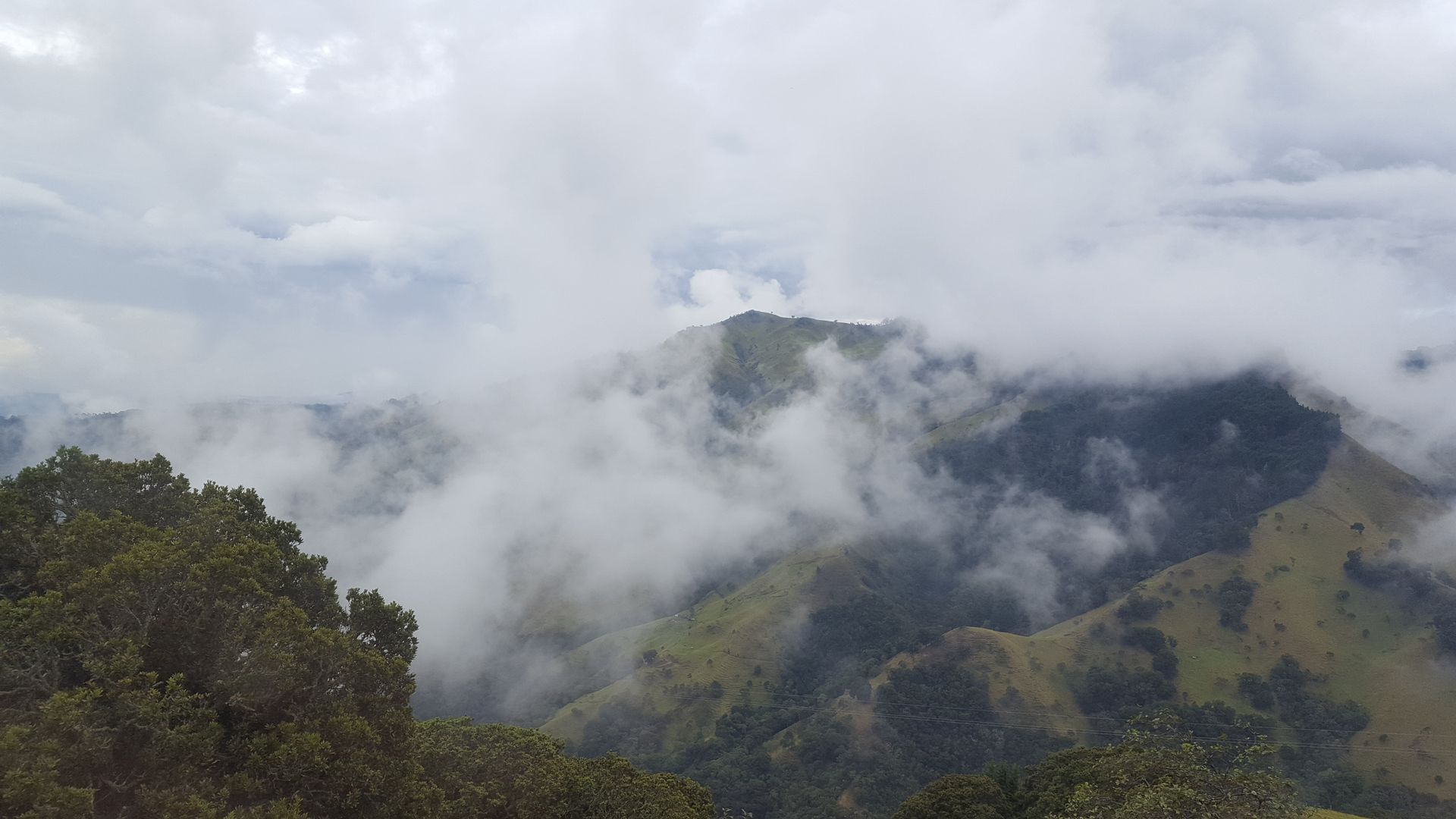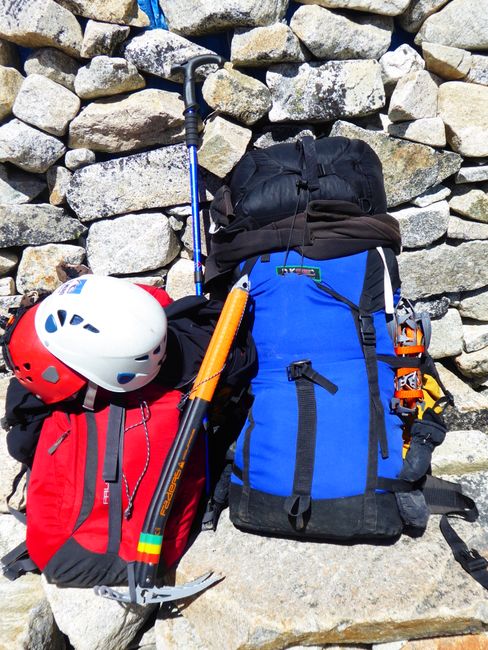Paracas - Huacachina - Nazca: Sand - Sand - Sand
Publisert: 16.11.2018

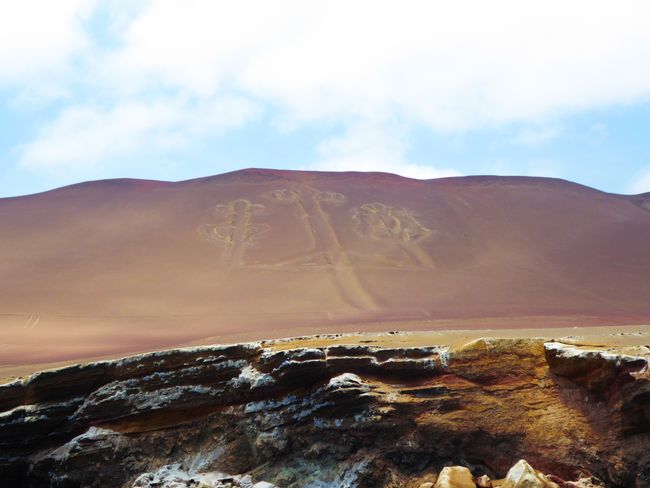
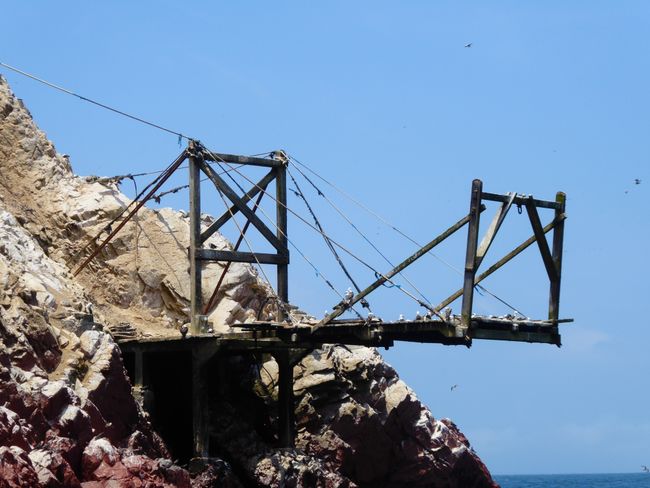
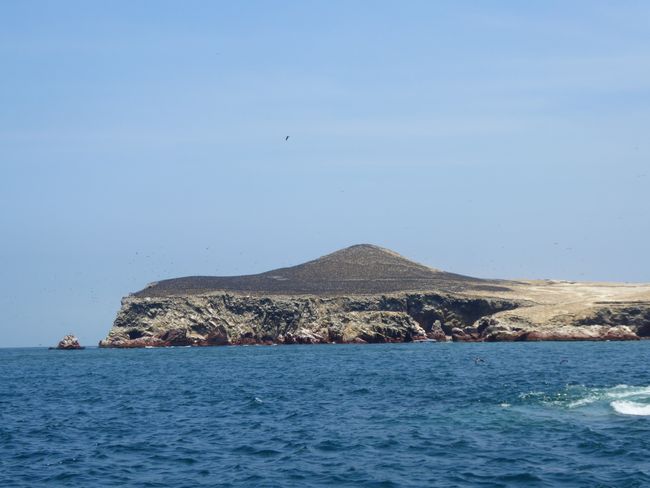
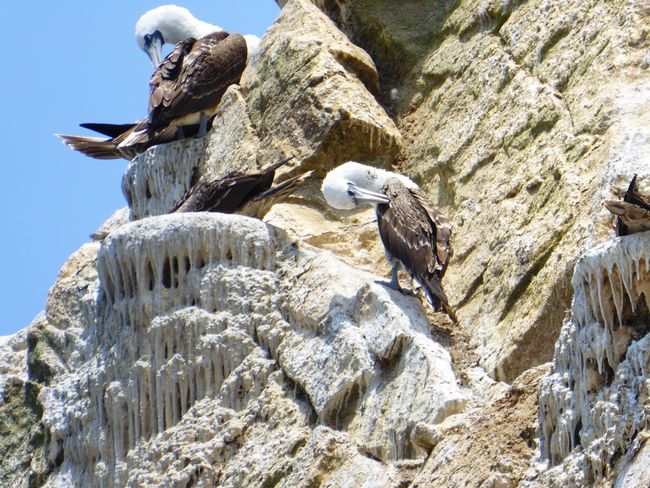
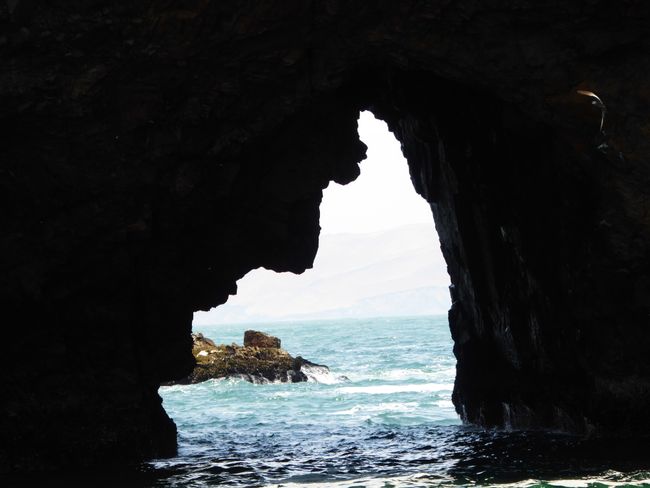
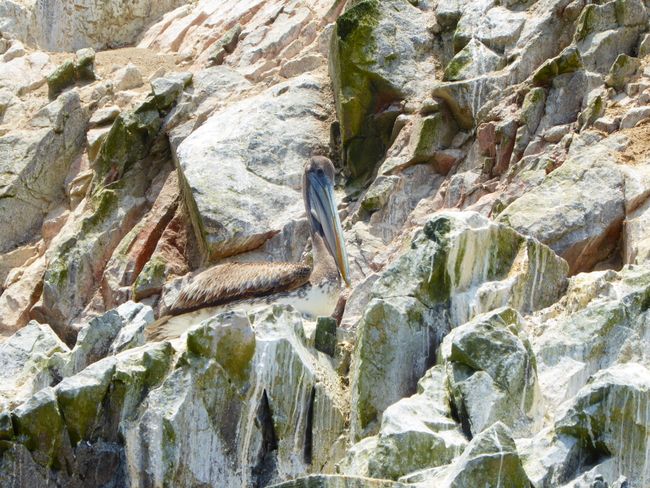
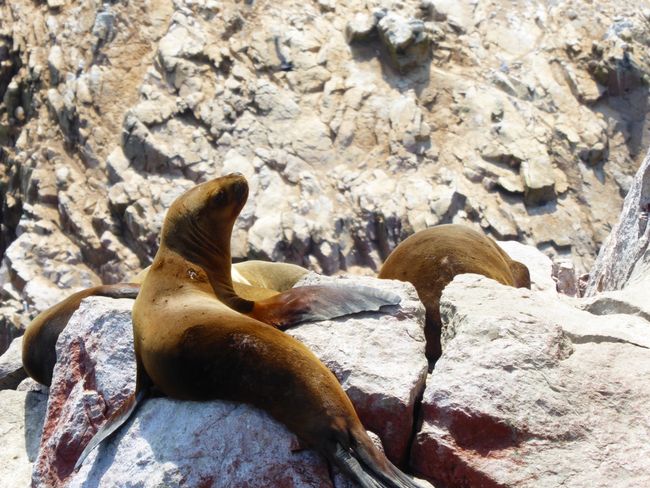
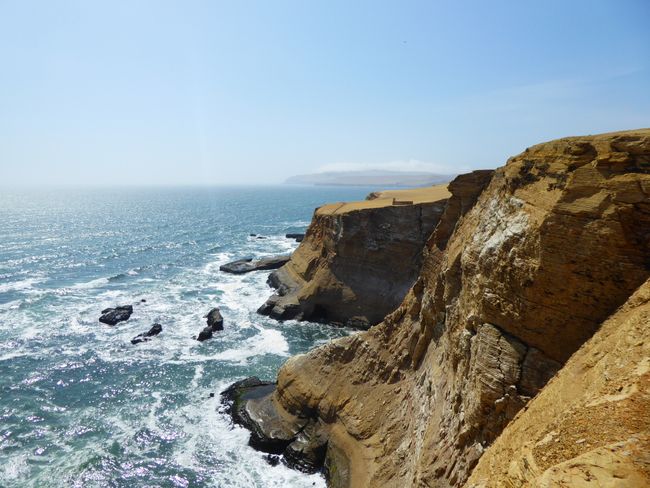
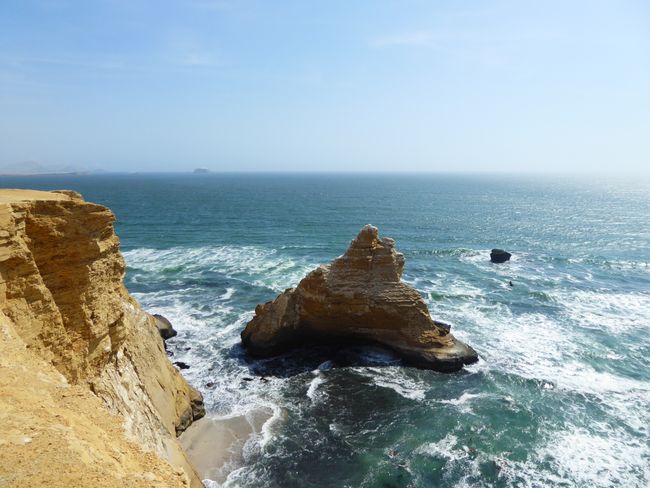
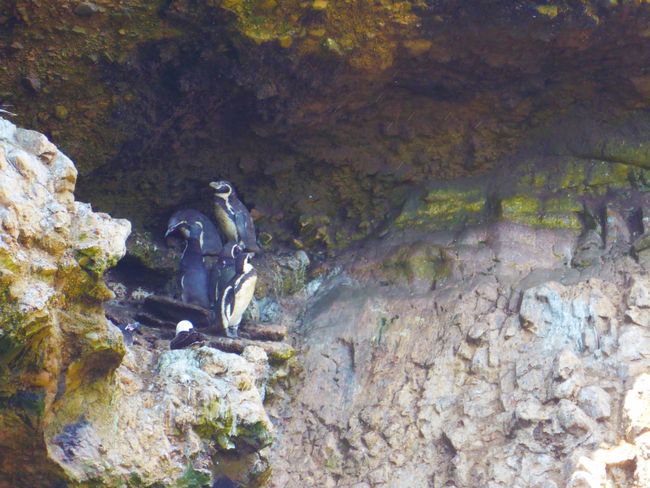
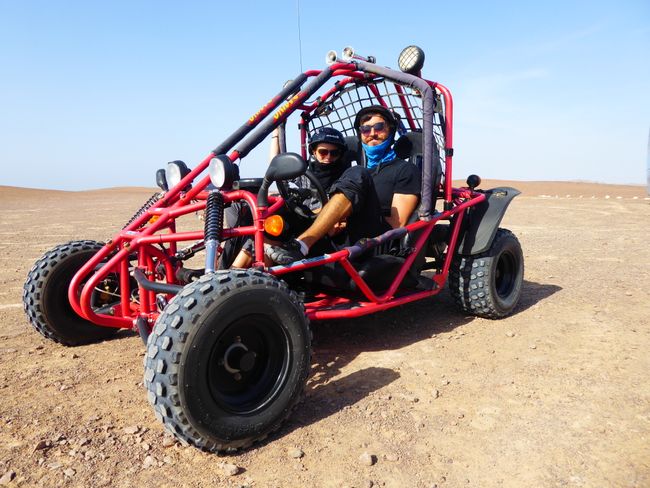
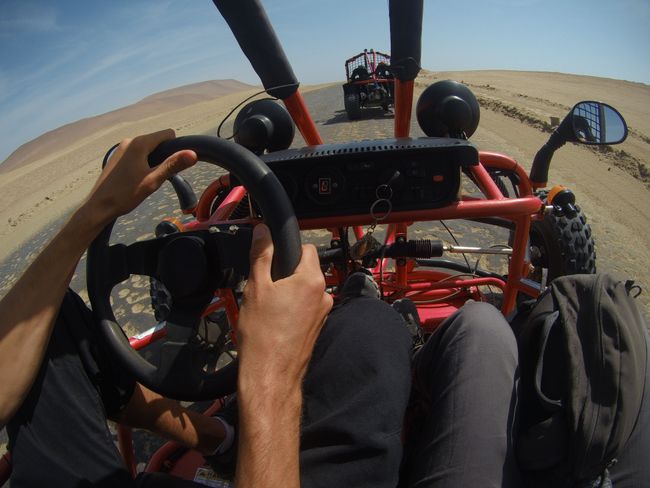
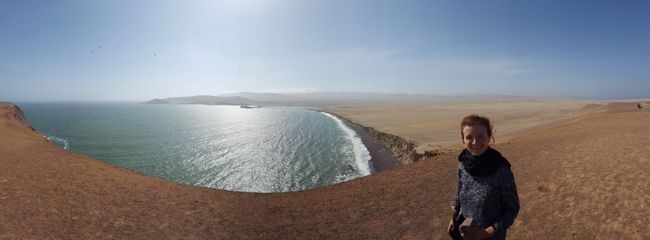
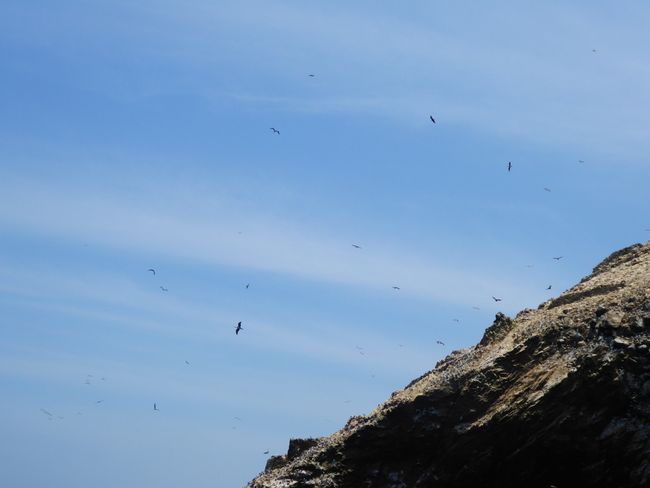
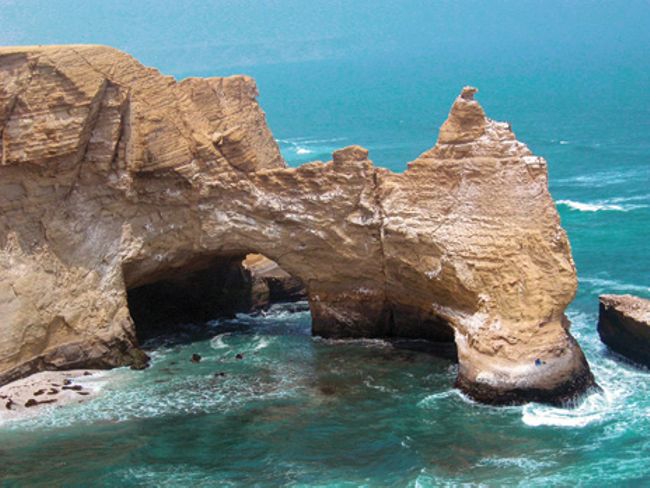
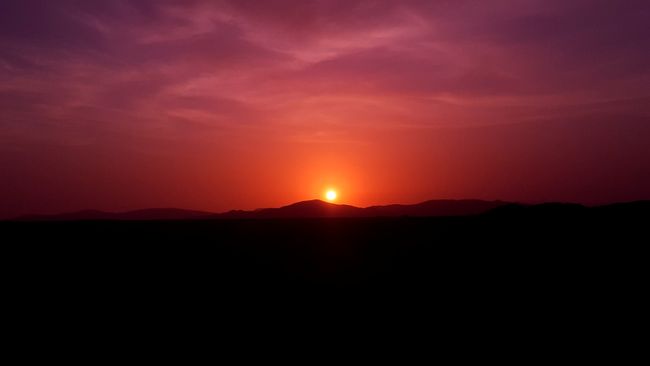
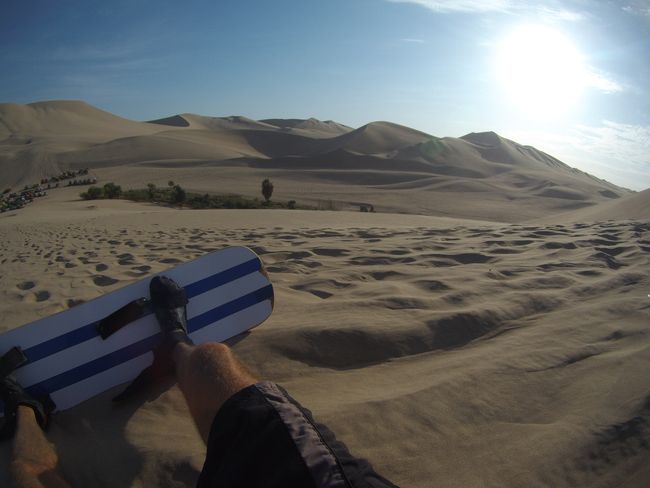
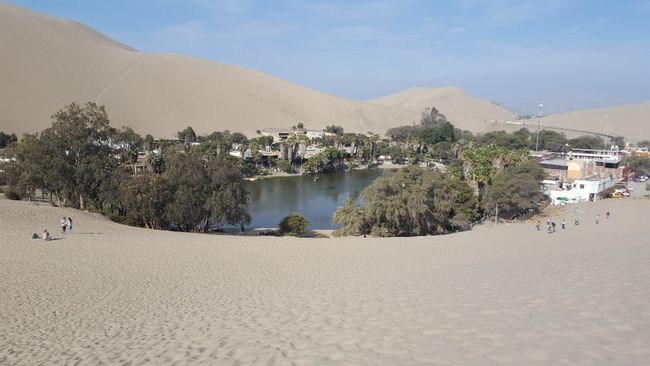
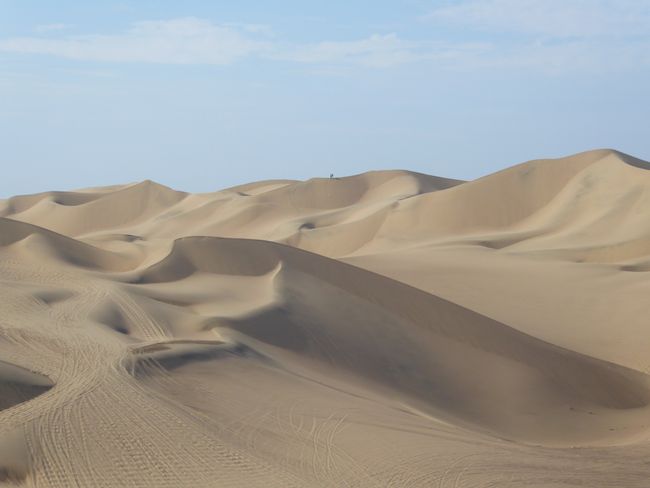
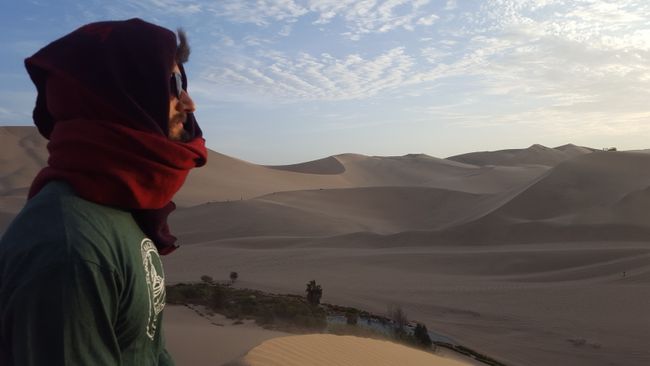
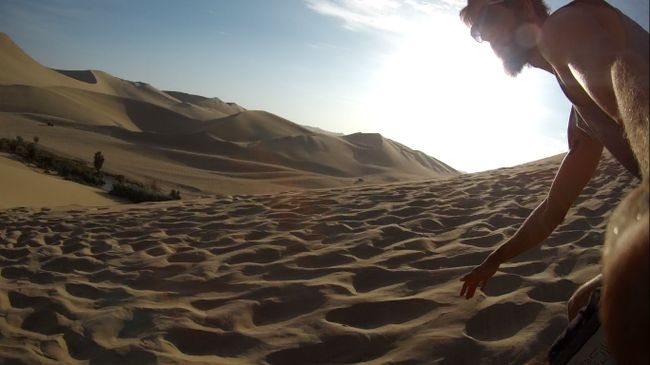
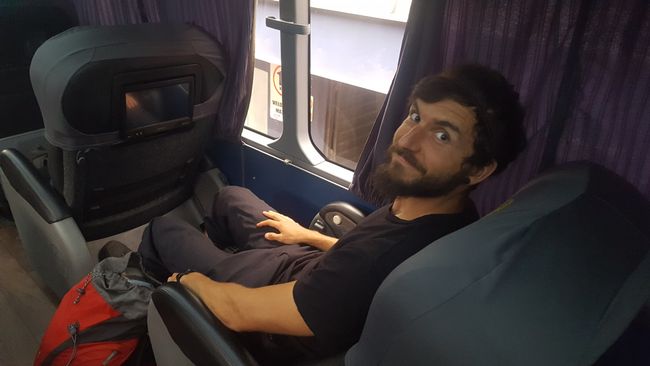
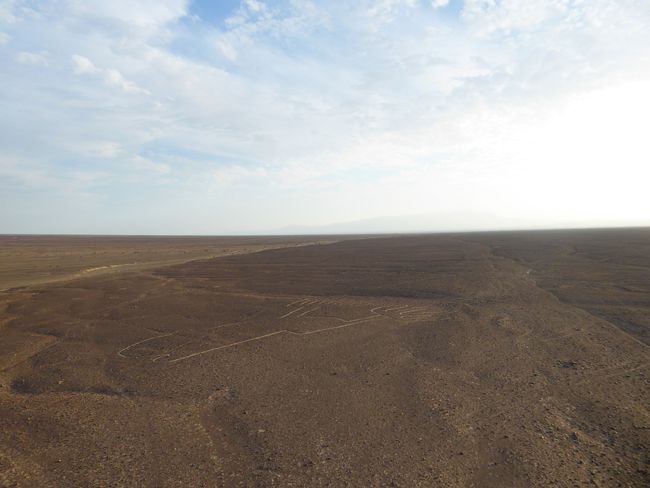
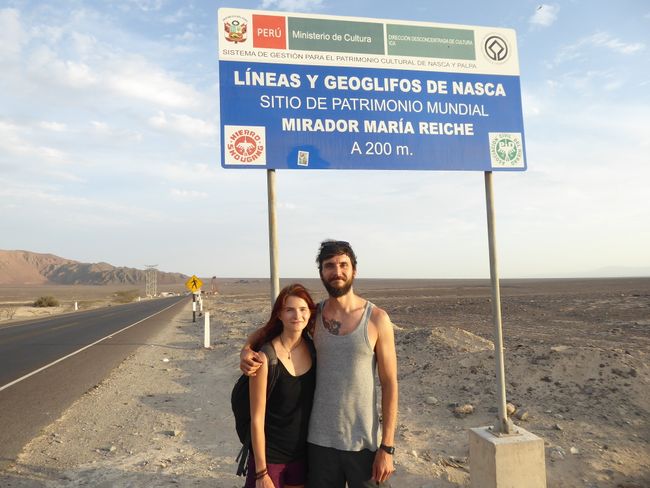
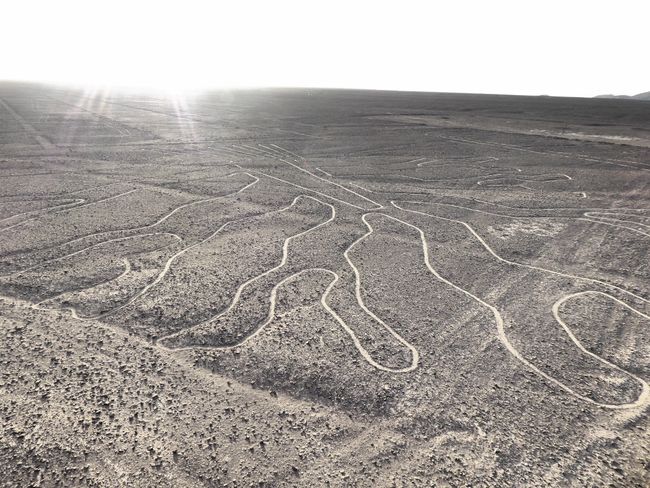
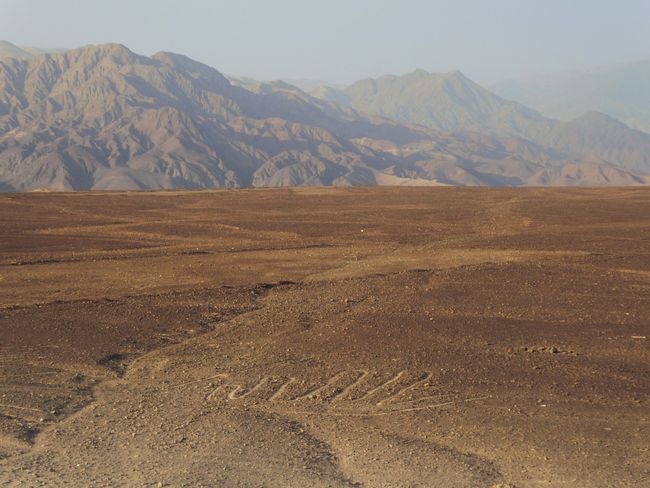
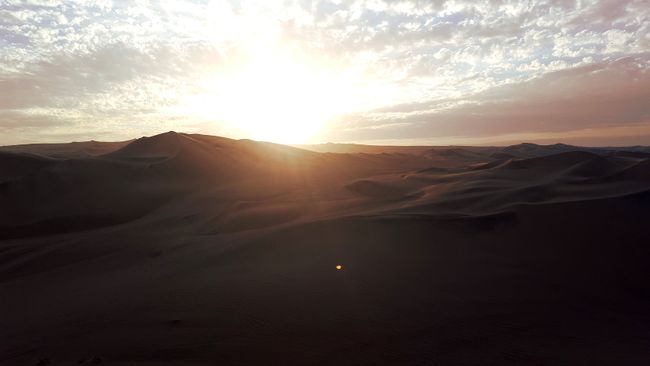
Abonner på nyhetsbrev
13.11.2018
The small desert town of Paracas is completely geared towards tourism. The agencies line up side by side on the main street and compete for customers. After our arrival, we also let ourselves be 'advised' on our way to the hostel. Carsten once again negotiates a bargain for us and ensures that we don't have to be at the pier at 7 a.m., but only after a leisurely breakfast at 10 a.m. The organizers of the boat tours also take it easy. From one corner to the next, we wait to set off to the Islas Ballestas. Annika uses her elbows to secure front seats for us in the boat.
This small island group is rightly called the Poor Mans Galapagos. If you want to save an overpriced flight and the $100 national park fee in Galapagos, you can come here and pay about 6 euros for a two-hour boat tour. Both places offer the opportunity to observe large numbers of boobies, cormorants, penguins, pelicans, and seals up close. Since we didn't see any penguins in Galapagos, we decide to do both.
The captain makes a first stop at the Candelabro - the candlestick - a sketch carved 70 cm deep into the pure rock. As the name suggests, it resembles a candlestick and is supposed to give us a first taste of the Nazca lines. The 120 m high geoglyph of Paracas is very likely much older and was created by a completely different culture than the better-known earth drawings in Nazca.
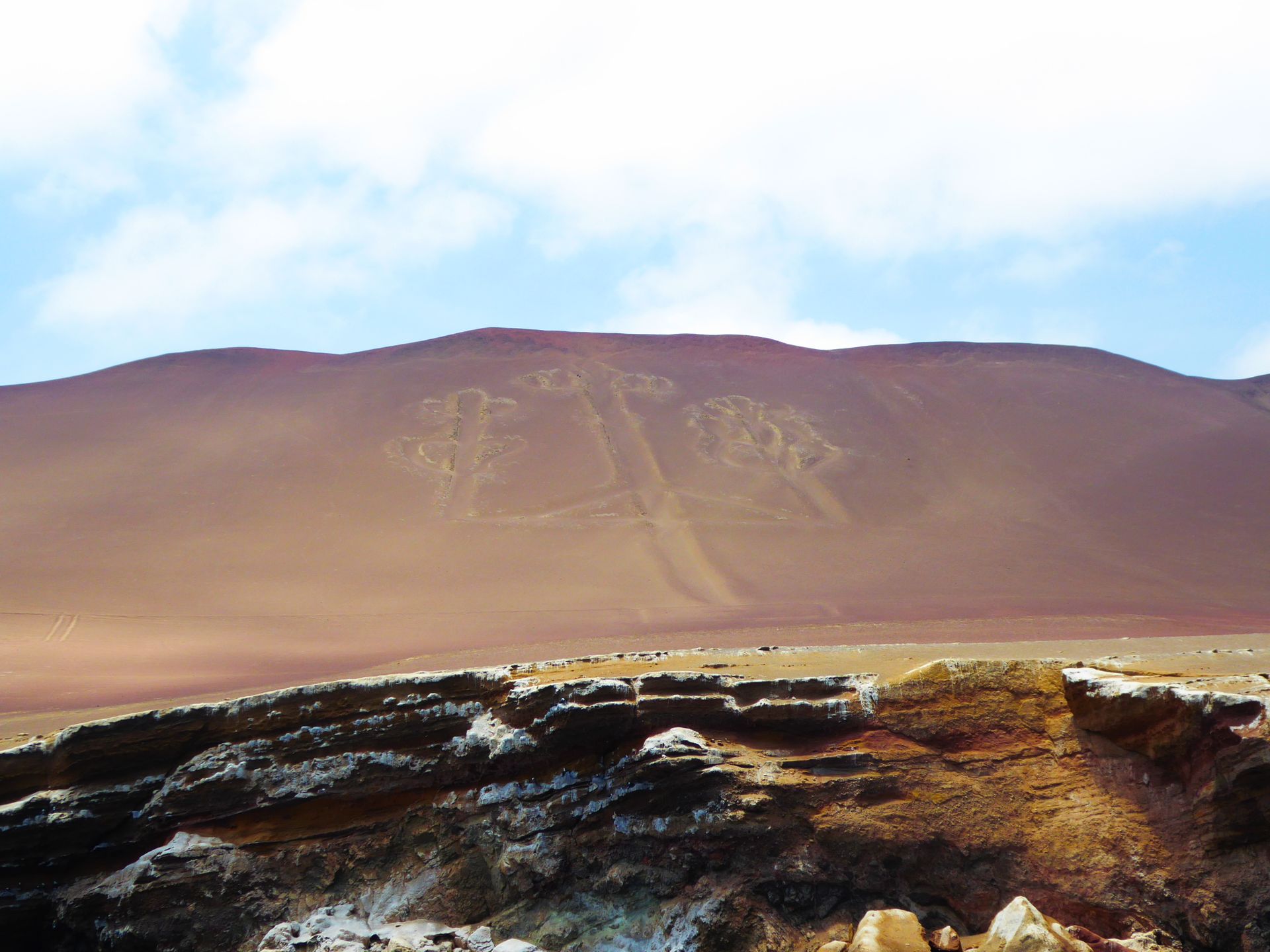
We chase the growing waves for another 15 minutes with our speedboat, only to be greeted by flocks of squawking seabirds at the actual highlight. The number of flying and lounging animals on the rocks is simply unbelievable. We have the feeling that a hat would have been the appropriate travel accessory today.
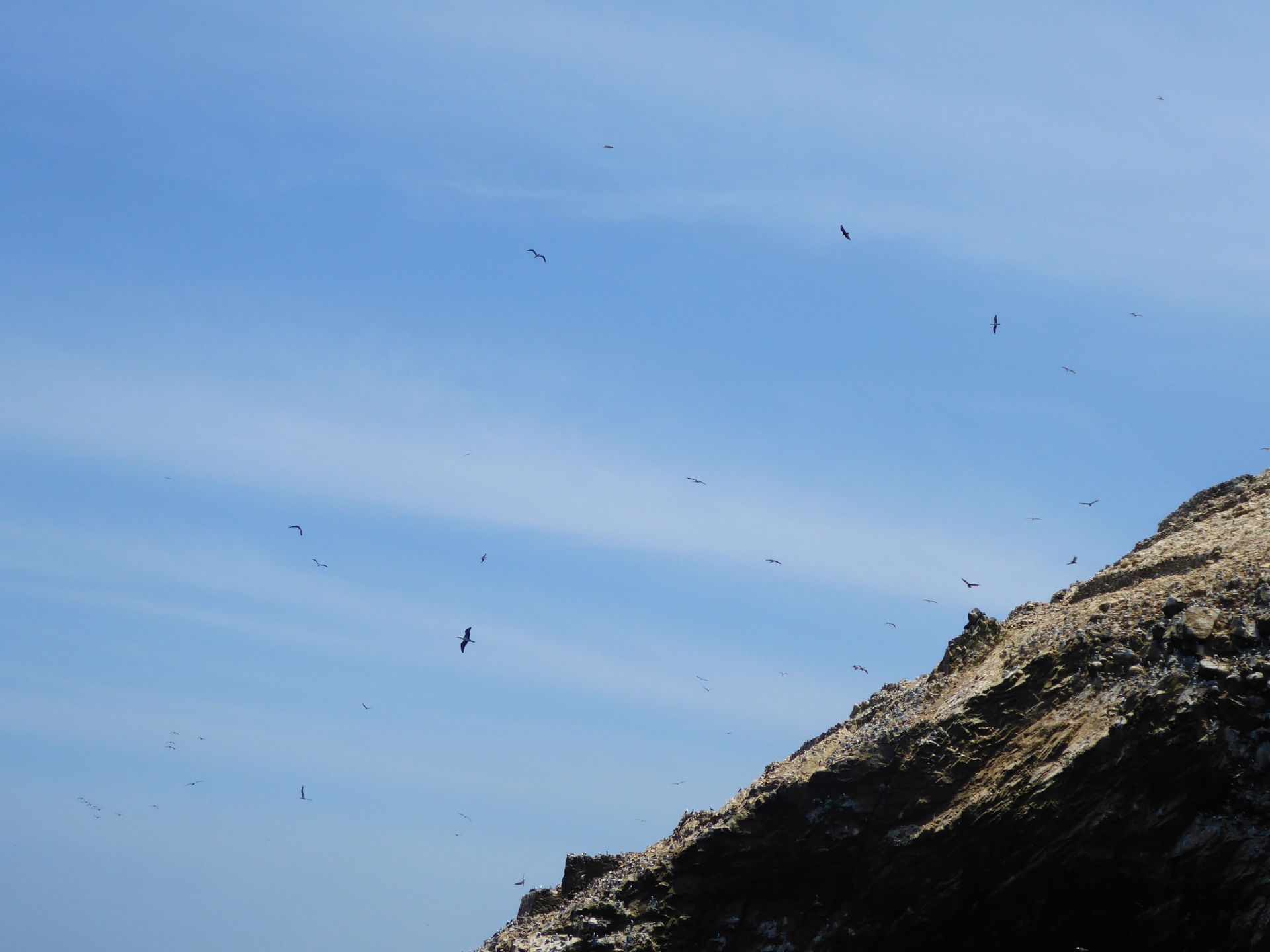
The cute blue-footed boobies crowd together. The sea lions and fur seals sleep in the sun and pay little attention to our visit.
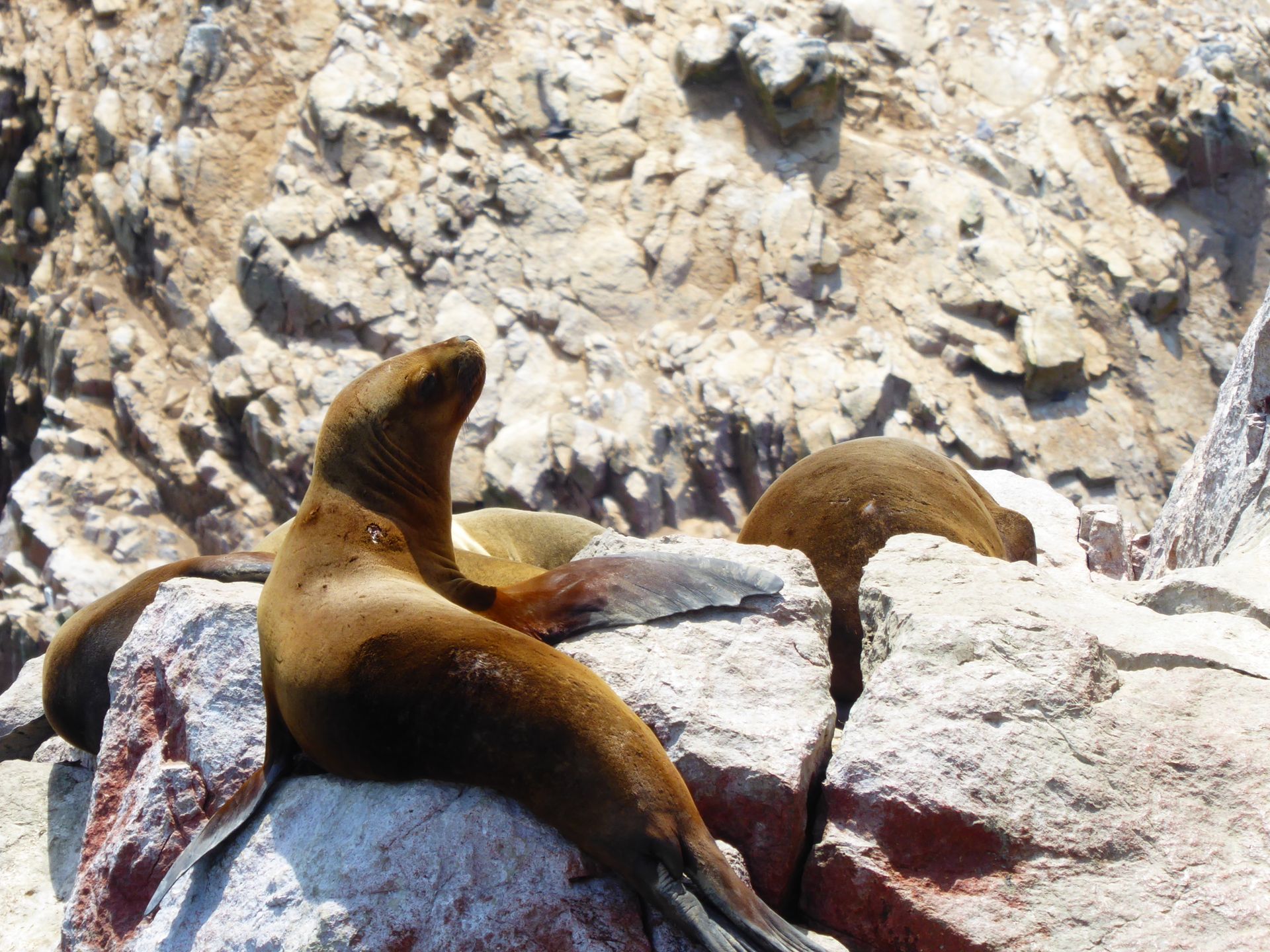
Due to the meter-thick layers of bird excrement, these islands become a place of pilgrimage for Andean farmers every 10 years. They clean the islands with hard work but are allowed to take valuable organic fertilizer home to cultivate their fields. Outside of this time, only one person is allowed to enter the islands - the guard. He is responsible for protecting the islands from pirates (vestiges of earlier times) and overzealous nature lovers.
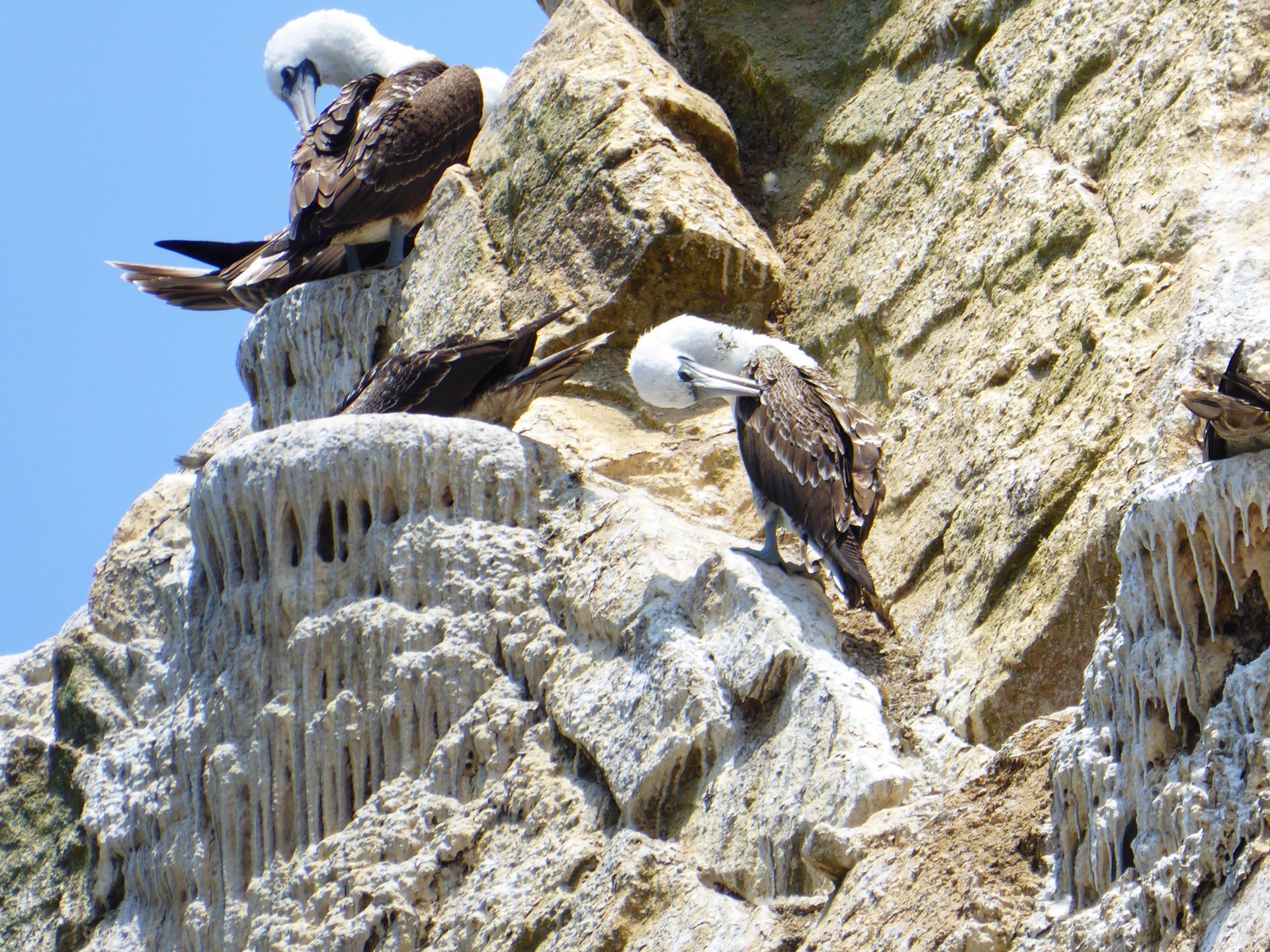
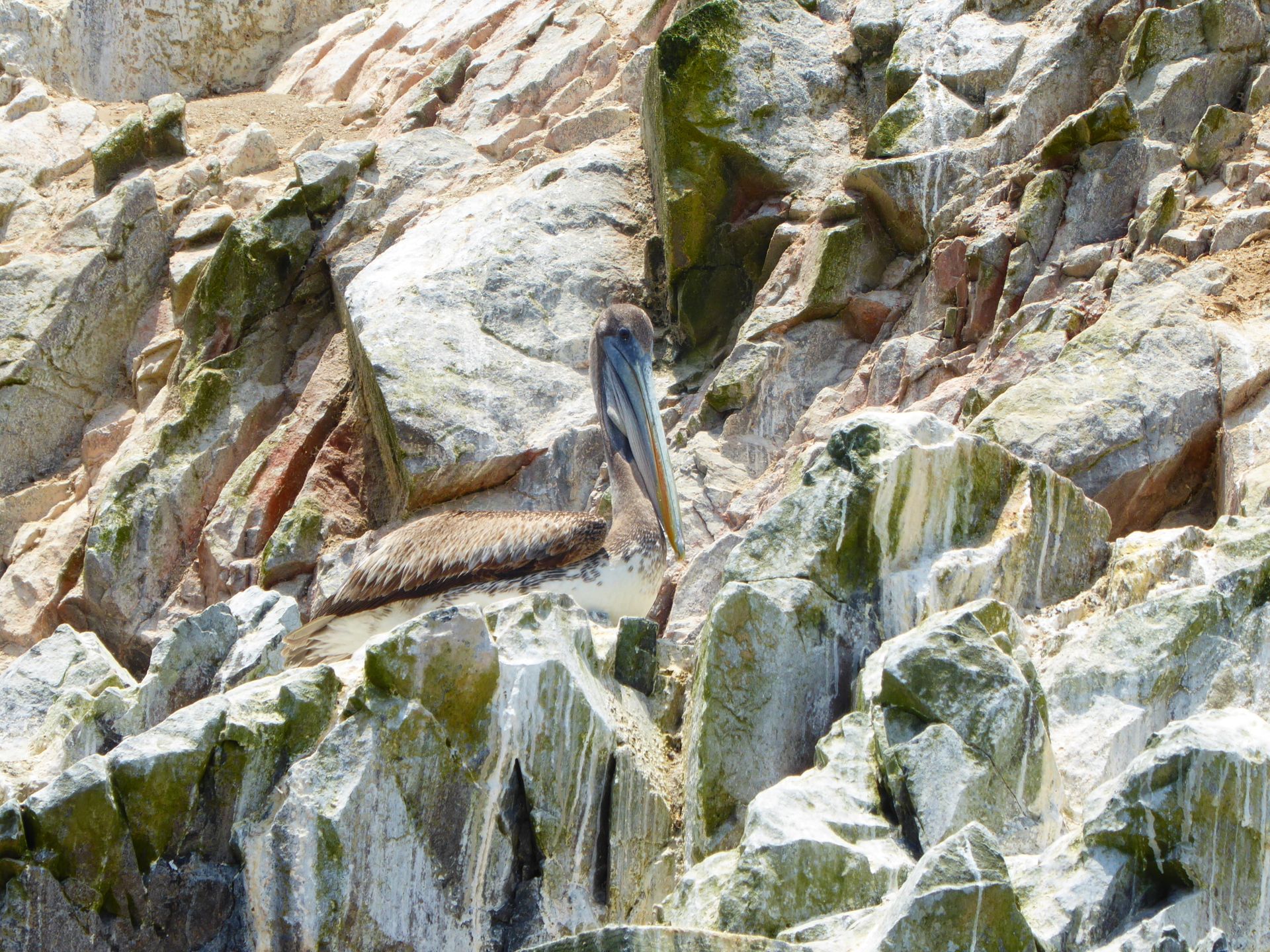
We cruise into small and large caves from which large flocks of red-black Inca terns flee. They seem to briefly take notice of us.
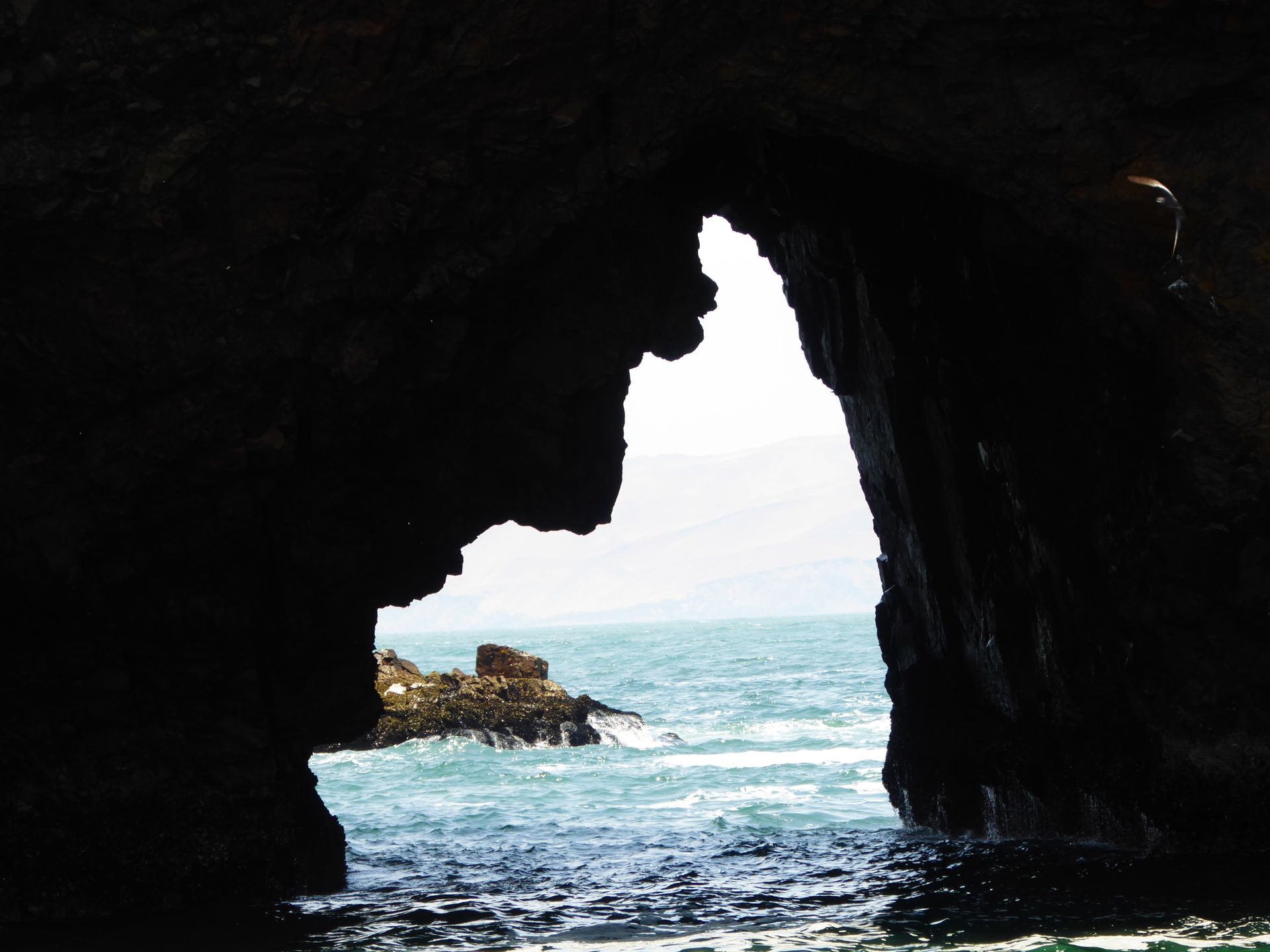
The face of Jesus is said to be hidden behind this rock formation - with a lot of imagination.
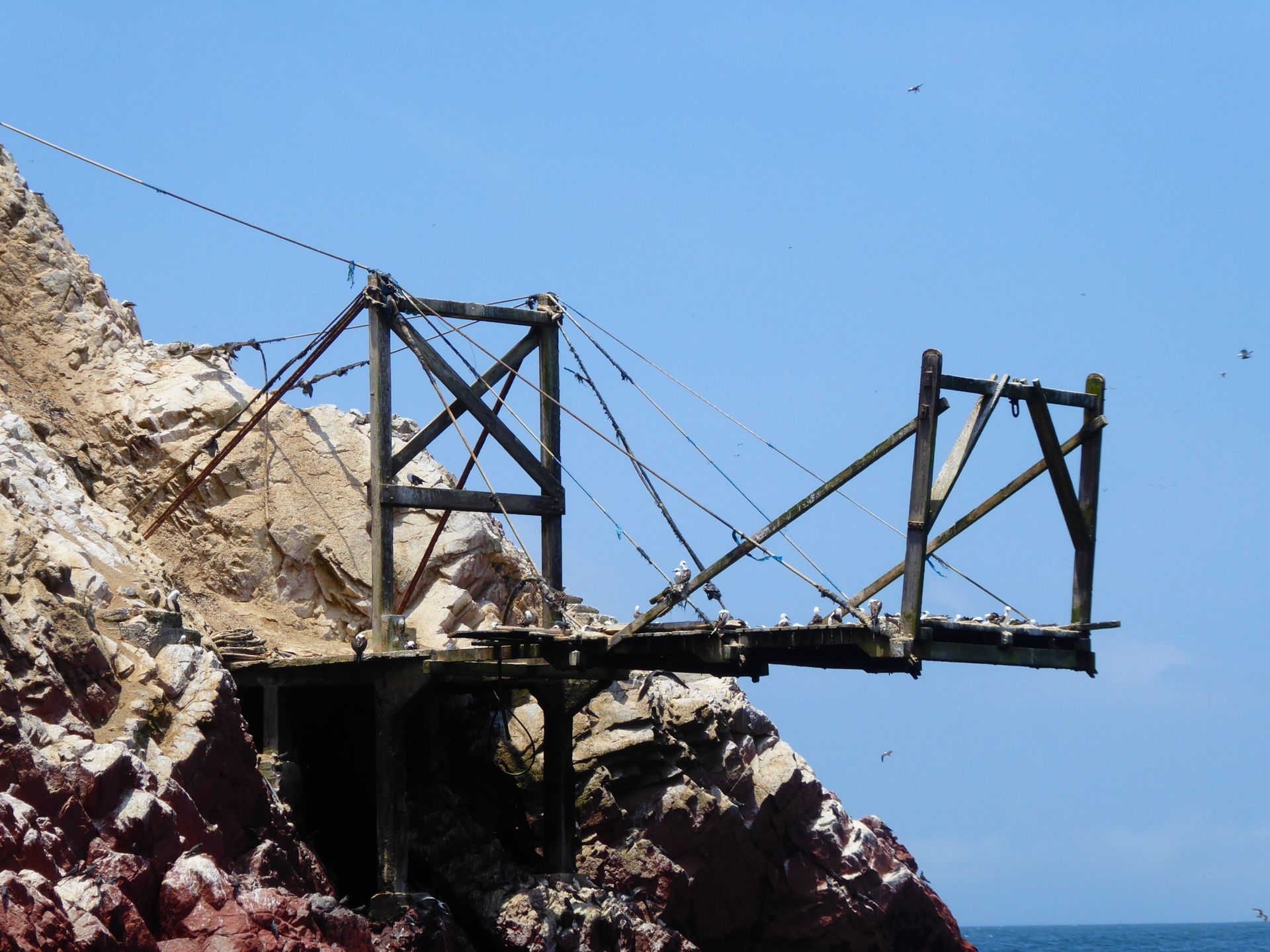
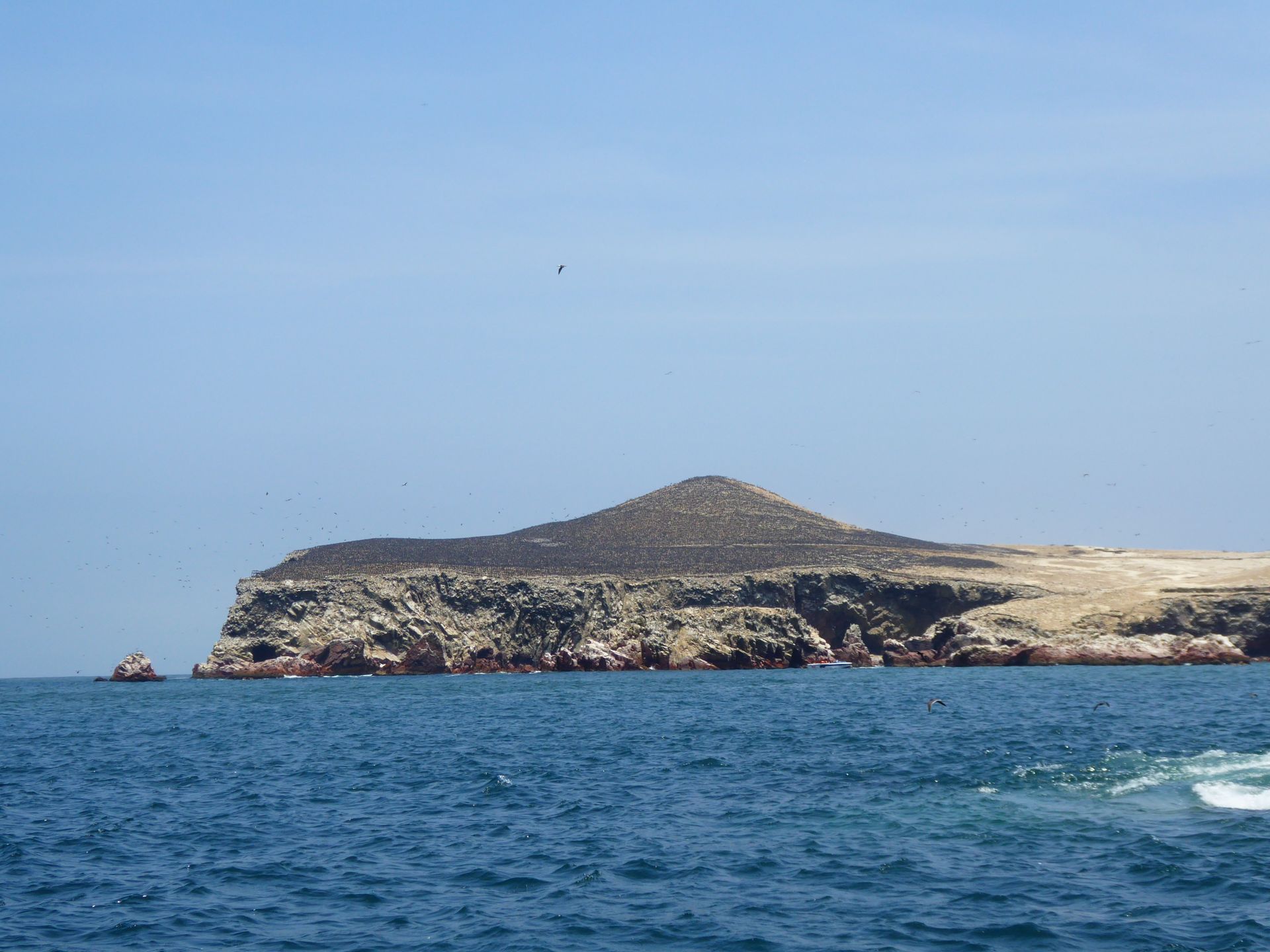
The black covering of the island is not vegetation or rocks, but breeding seabirds!
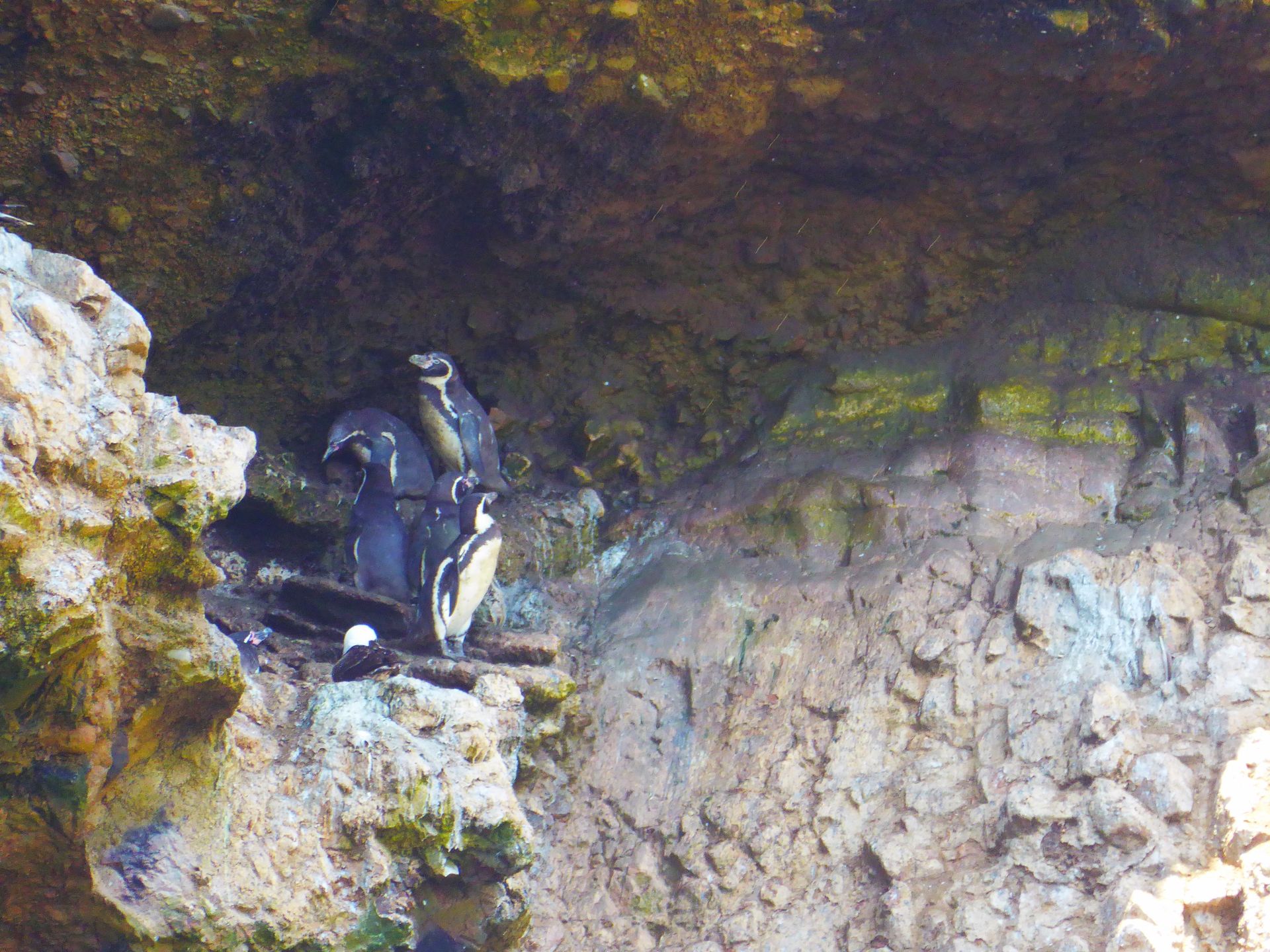
On the way back, the captain steps on the gas again. We literally fly over the waves with our boat. Thanks to Annika's sharp elbows, the passengers in the back are no longer just screaming for joy. In fact, some of the waves are breaking not next to, but partly inside our boat. Fortunately, only in the last third of our speedboat. We stay relatively dry.
After a short lunch break and refreshment, the second highlight of our day awaits: riding through the dune landscape of the Paracas National Park in a dune buggy. Another thing to check off on Craigslist. Originally, we had planned to do this at our next stop in Huacachina, but then we realized that there you are only driven around in a 12-seater without being able to get involved. So we opt for the smaller but much more intimate version - a two-seater with Carsten at the wheel.
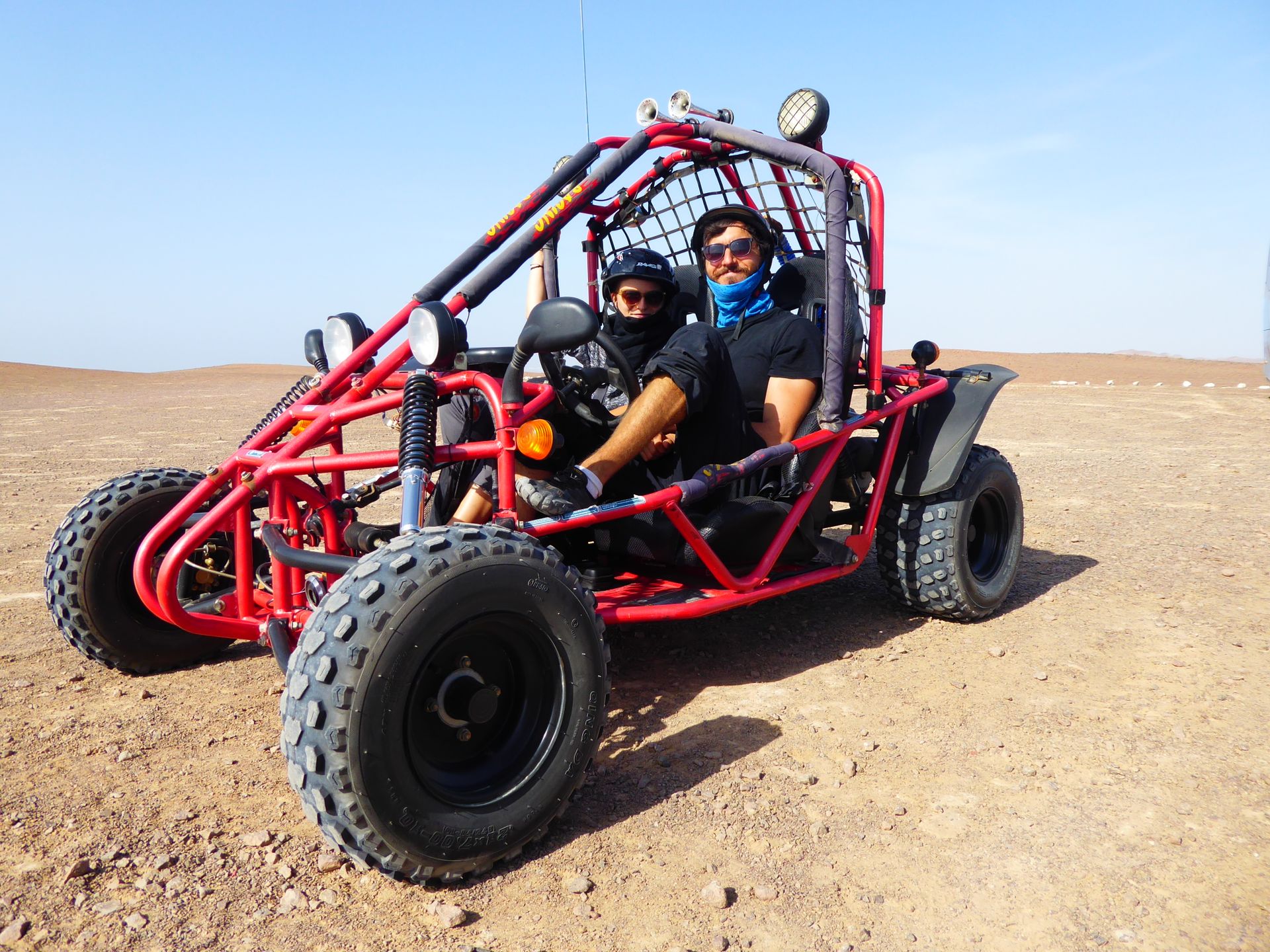
Together with an Israeli, we zoom through the barren desert landscape for almost two hours. The few 'roads' we drive on consist exclusively of larger and smaller salt crystals that burn beautifully in our eyes when they are stirred up. As far as the eye can see, there are dunes, rocks, and beaches.
We make a short stop at La Cathedral, a natural rock formation that resembled an archway before it perished in the last major earthquake in 2007. The last stop in the national park is Playa Roja. This is one of the few red sand beaches in the country.
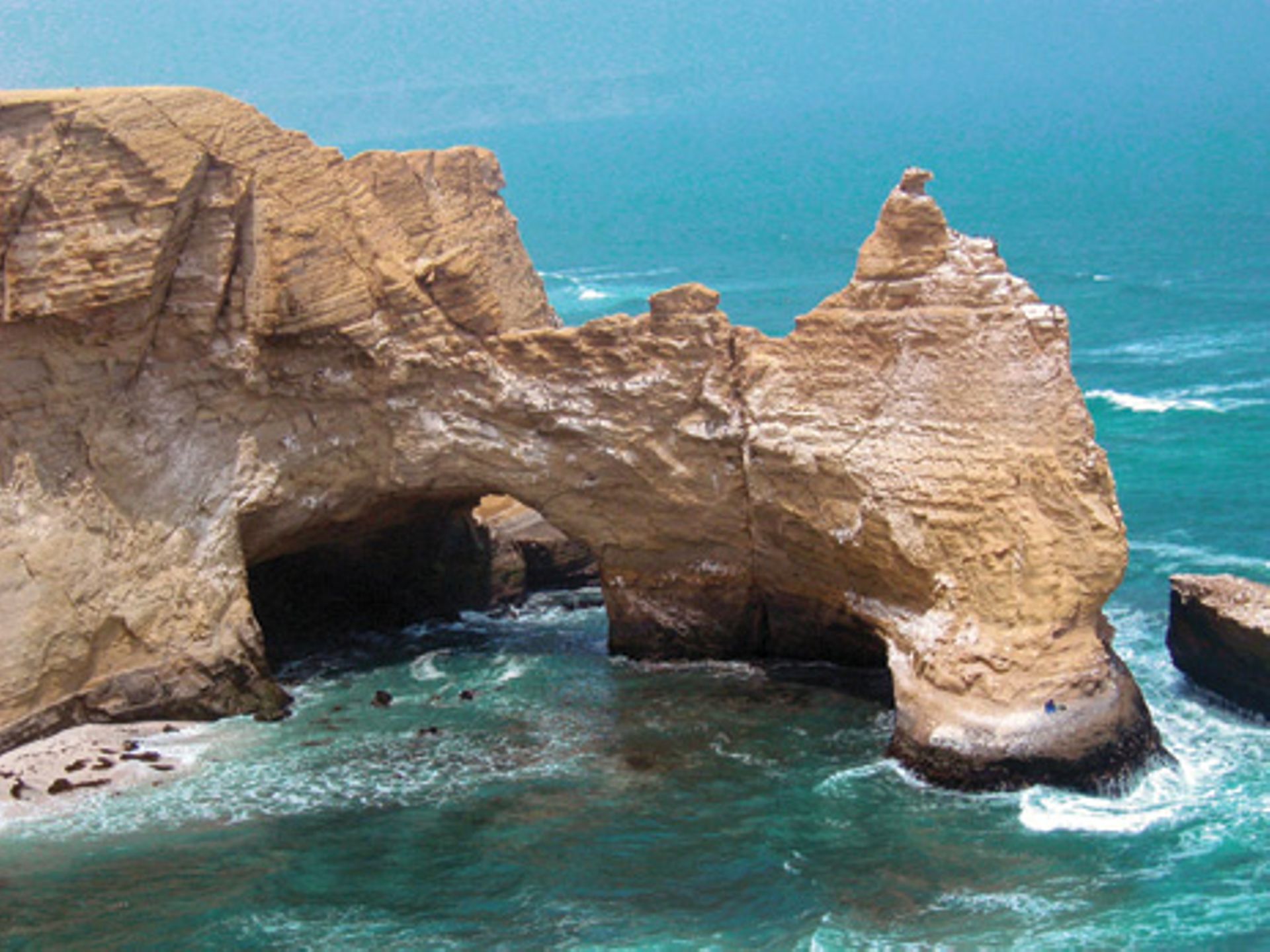
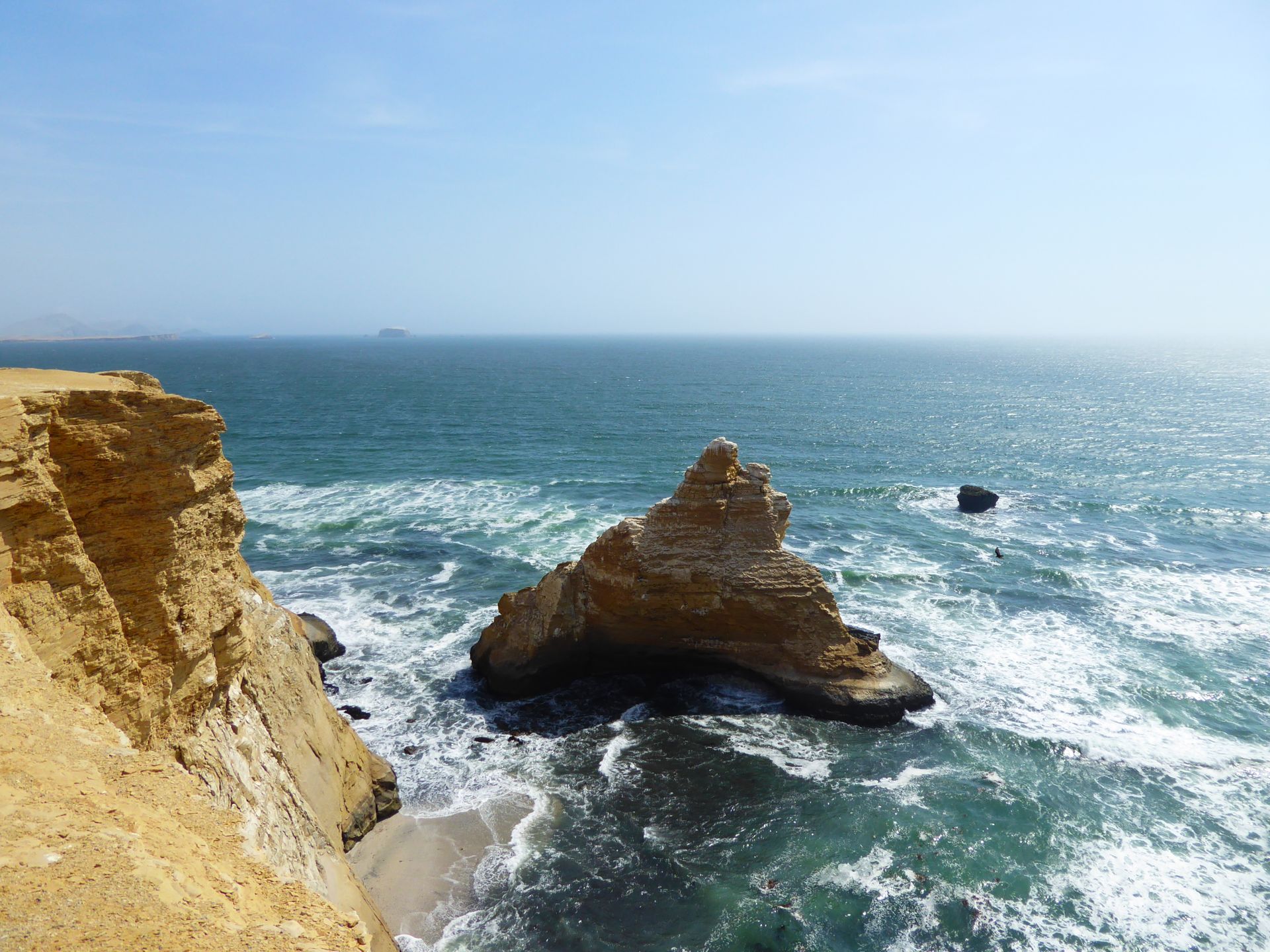

In the evening, we sit on top of one of the sand dunes and watch the sun go down on the horizon, while hordes of tourists zoom through the desert in the 12-seater buggies. The wind blows the sand over the dune peaks, so we have to cover our faces to protect our eyes from the gritty grains.
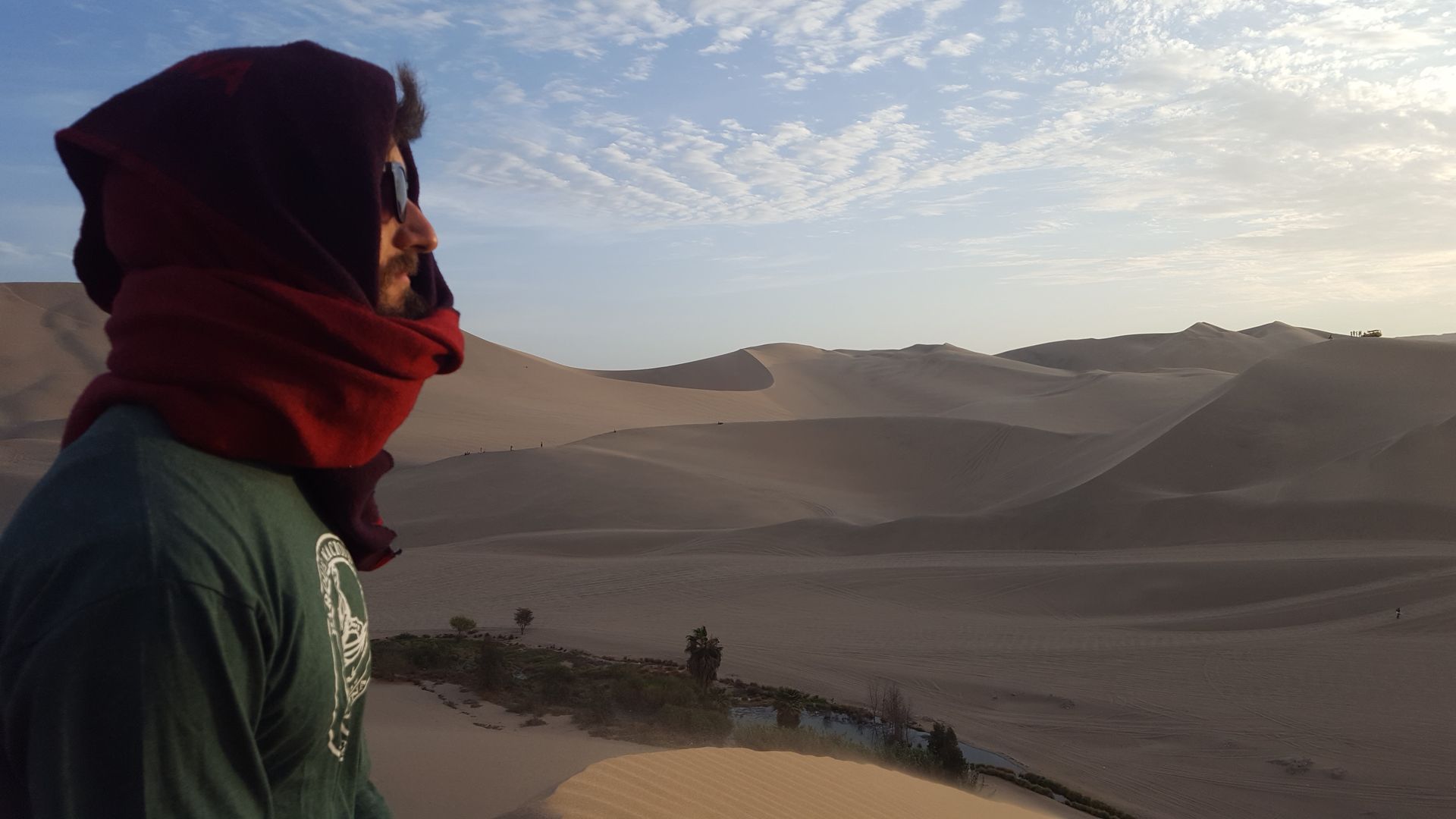
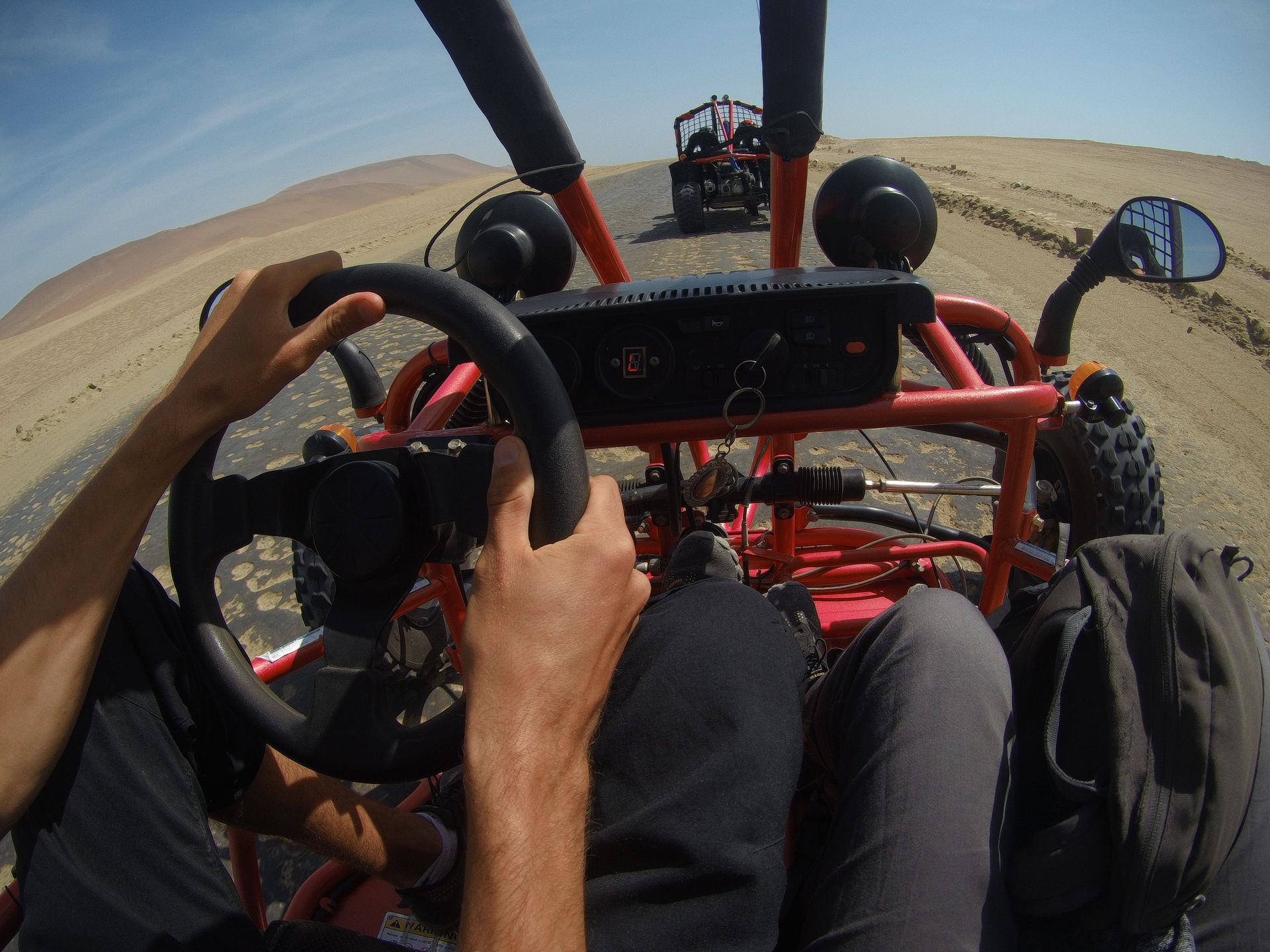
In the evening, we enjoy the taxi ride home with the accompaniment of 80s hits. During dinner, we plan the next day. On to Nazca!
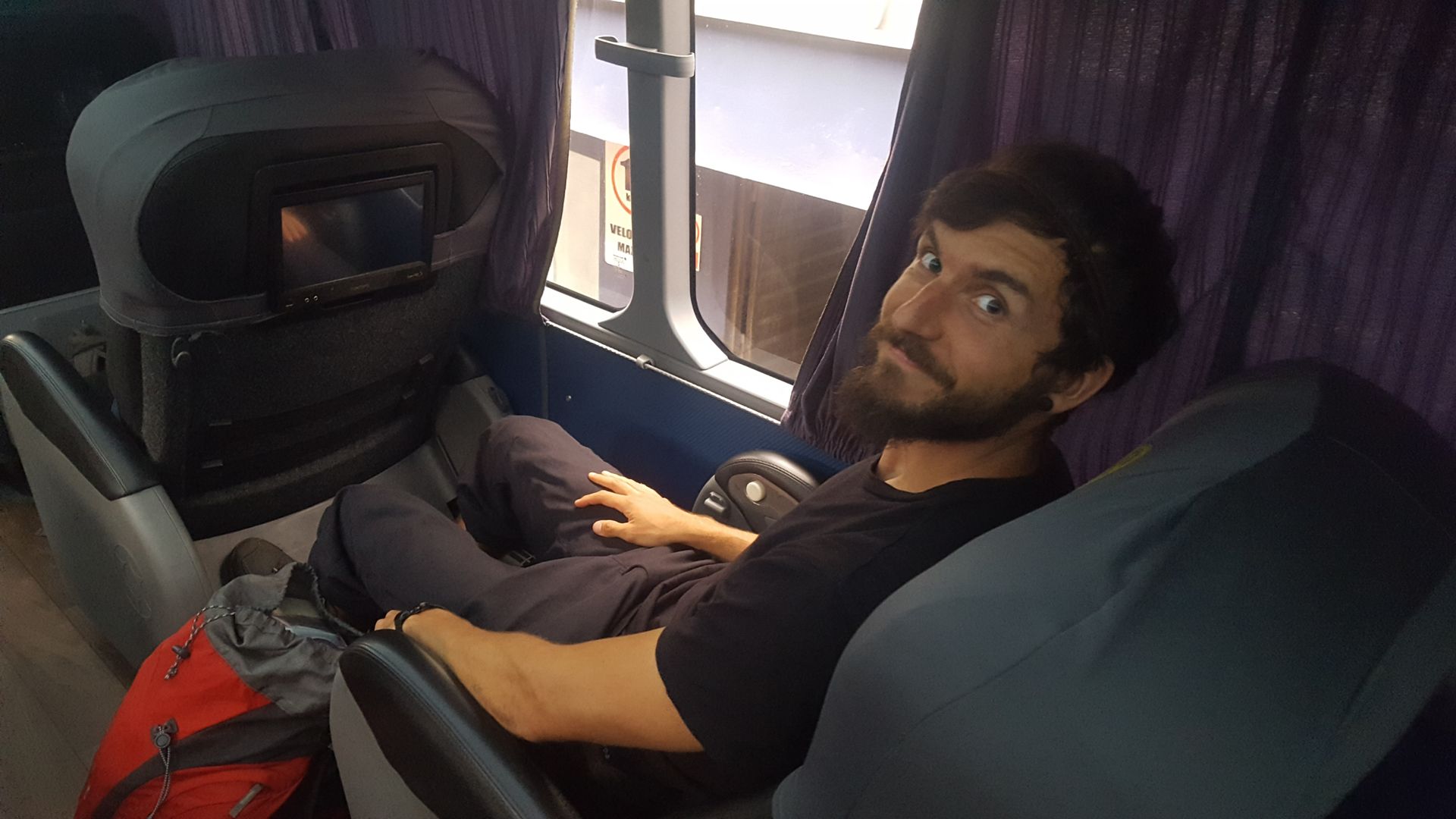
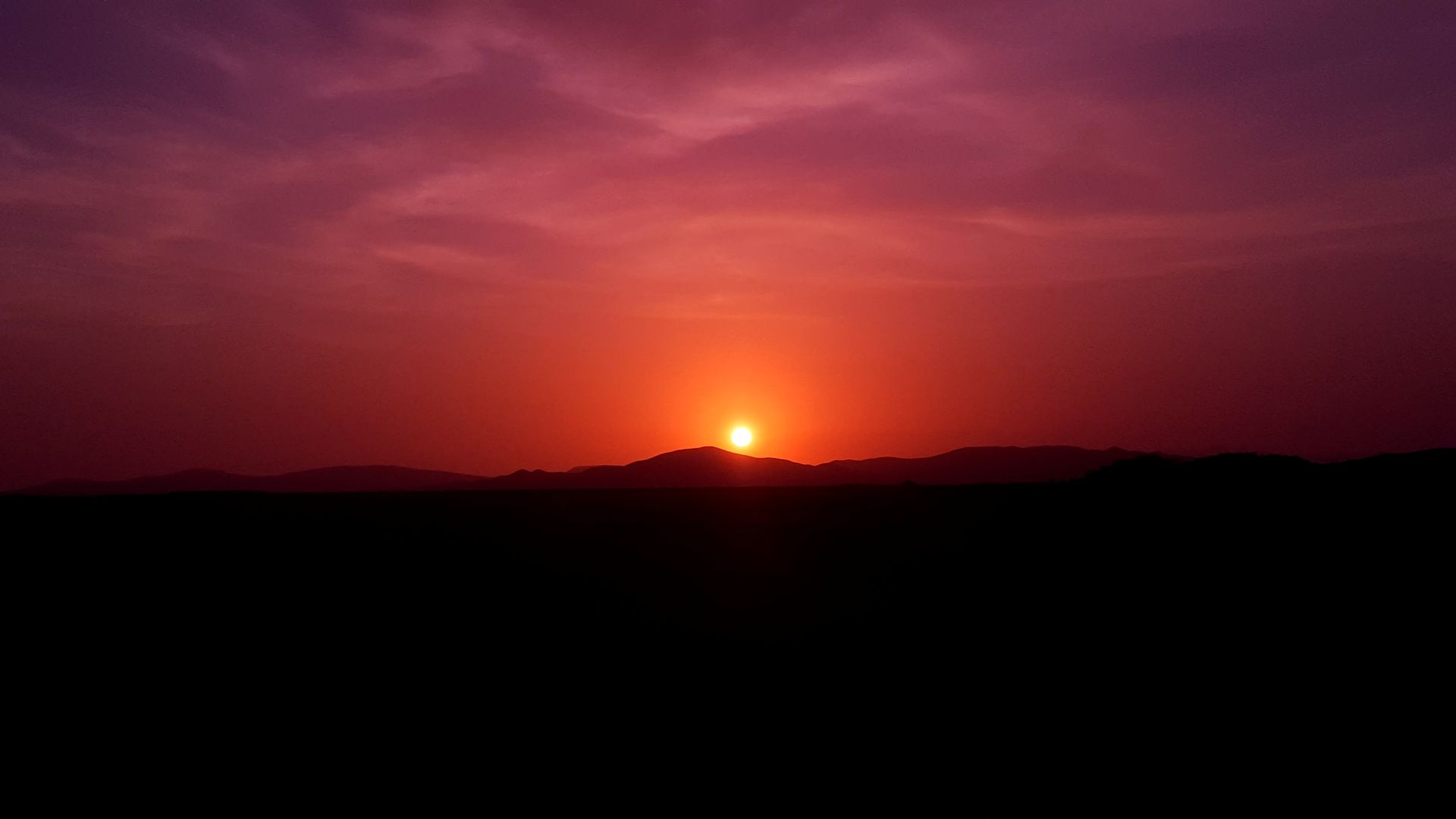
14.11.2018
Nazca... the city known only for its world-famous lines, offers exactly that, and only that. The city is not particularly large or beautiful, but it has everything you need. Arriving at the bus station, we arrange ourselves and are about to head to the colectivo when we pause. Next to us sits a doppelganger. This gentleman looks exactly like Hannes, an acquaintance from Leipzig. When he starts speaking German, we decide to simply approach him. And the doppelganger turns out to be the original!
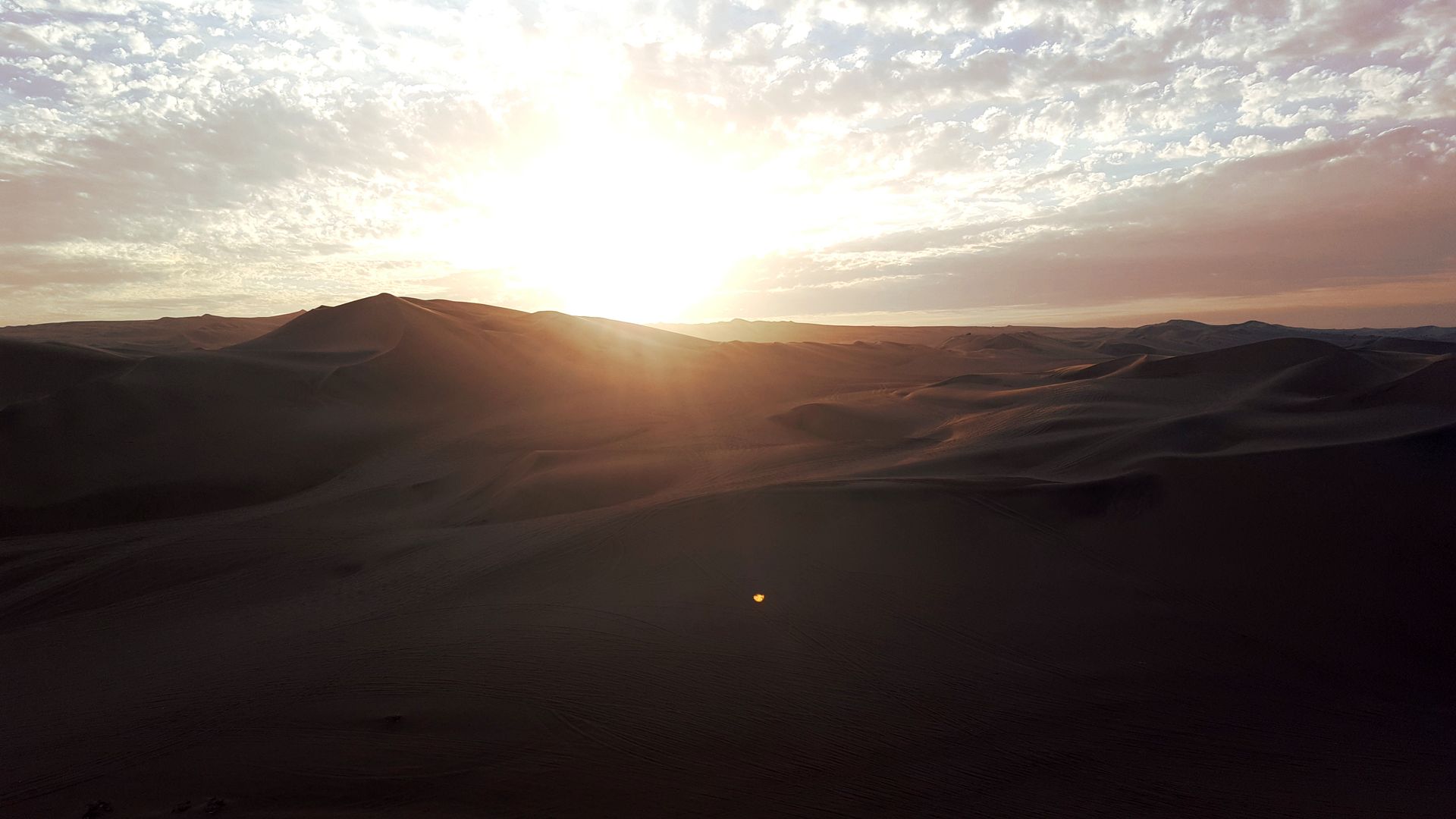
After a warm welcome, we set off together to the Maria Reiche viewpoint. This German mathematician has thoroughly studied the Nazca lines and still has not found a hundred percent explanation for the function of the huge patterns in the desert floor. Nowadays, various theories compete - from religious ceremonies to irrigation systems and auxiliary astronomical lines, everything can be found.
We take the public bus into the countryside after a short wait.
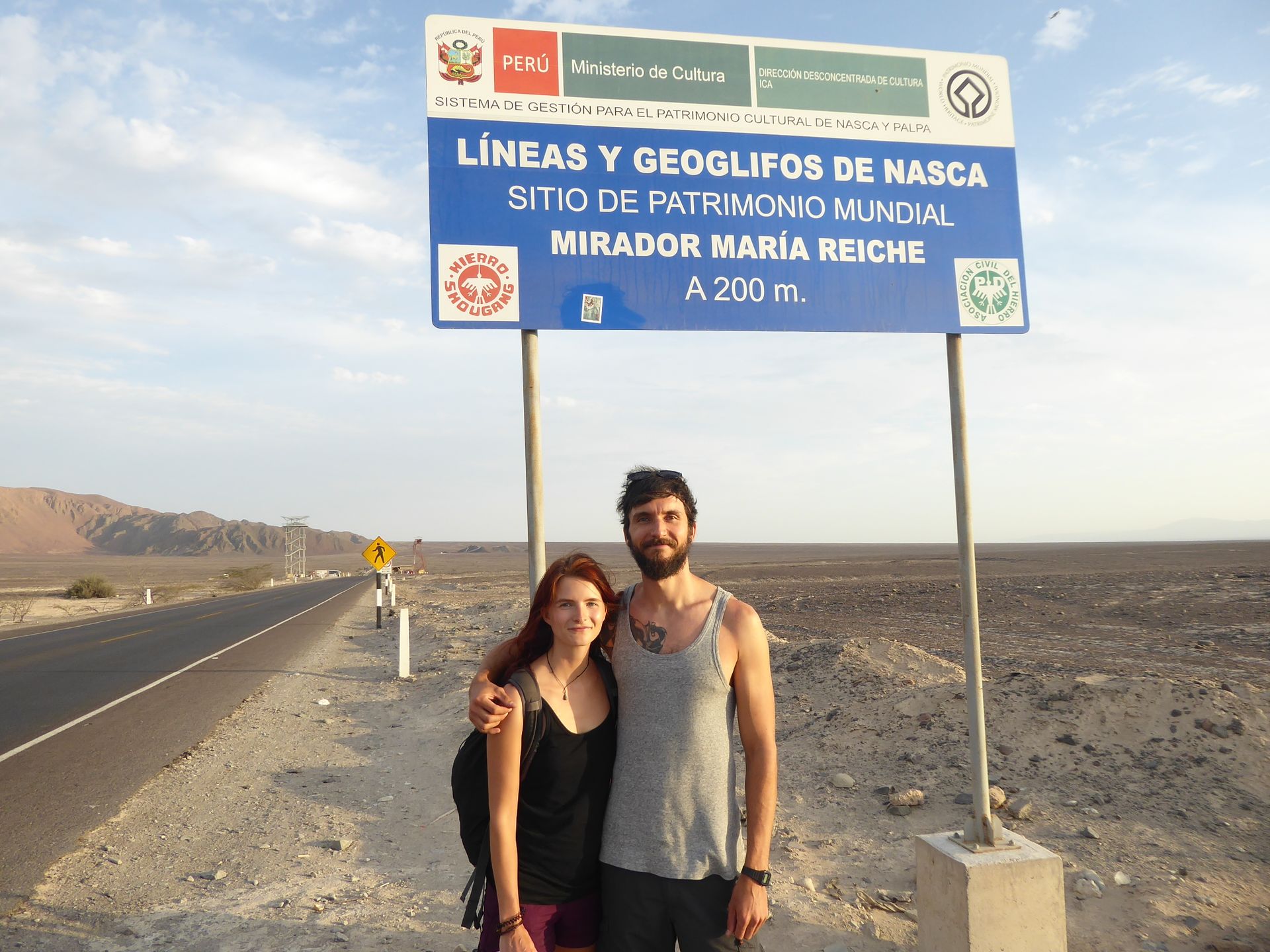
The view from the steel tower of the barren desert landscape is not particularly good. But Hannes tells us about his experiences from the plane, so we can better understand the dimensions of the figures in the stone.
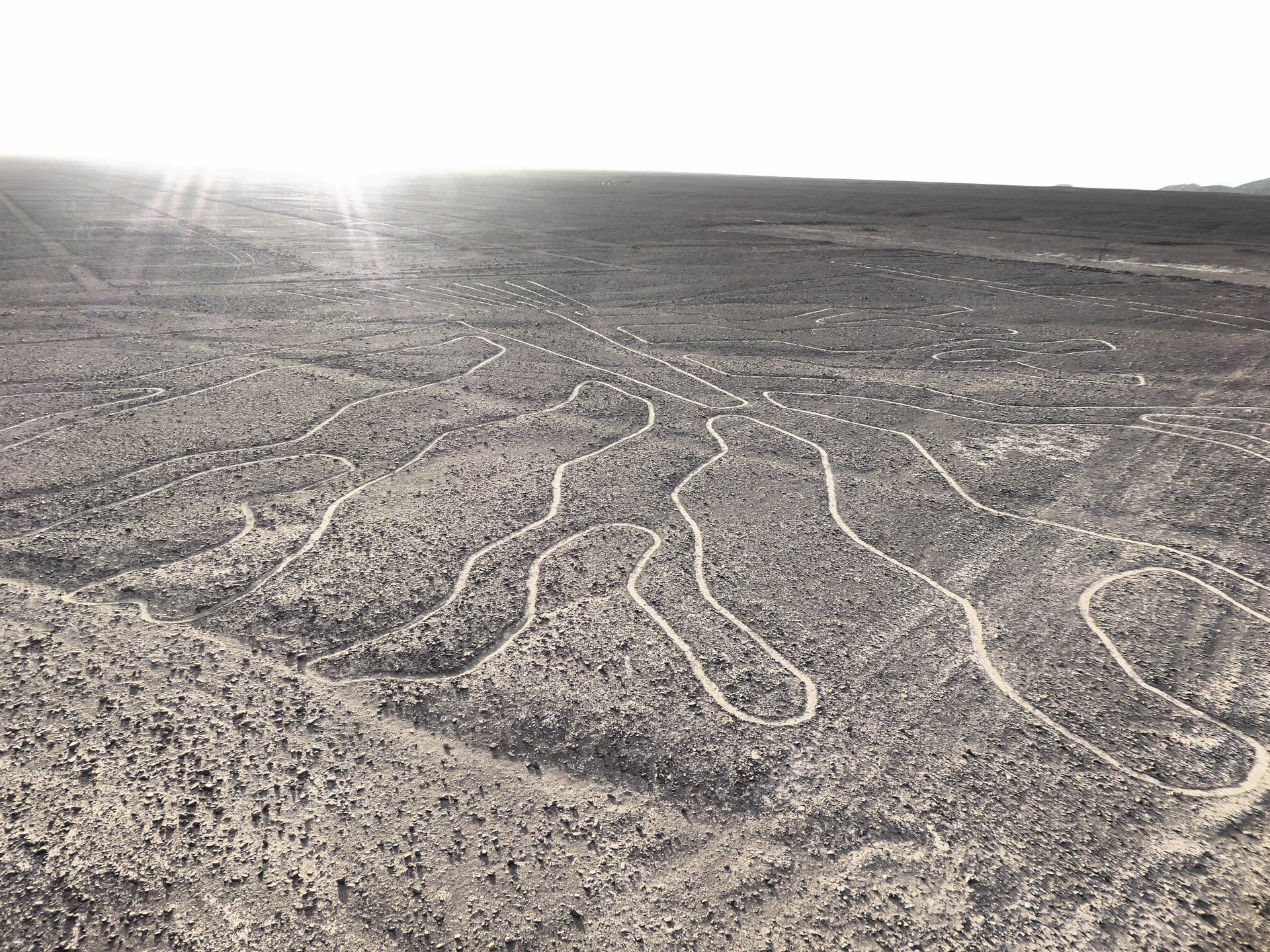
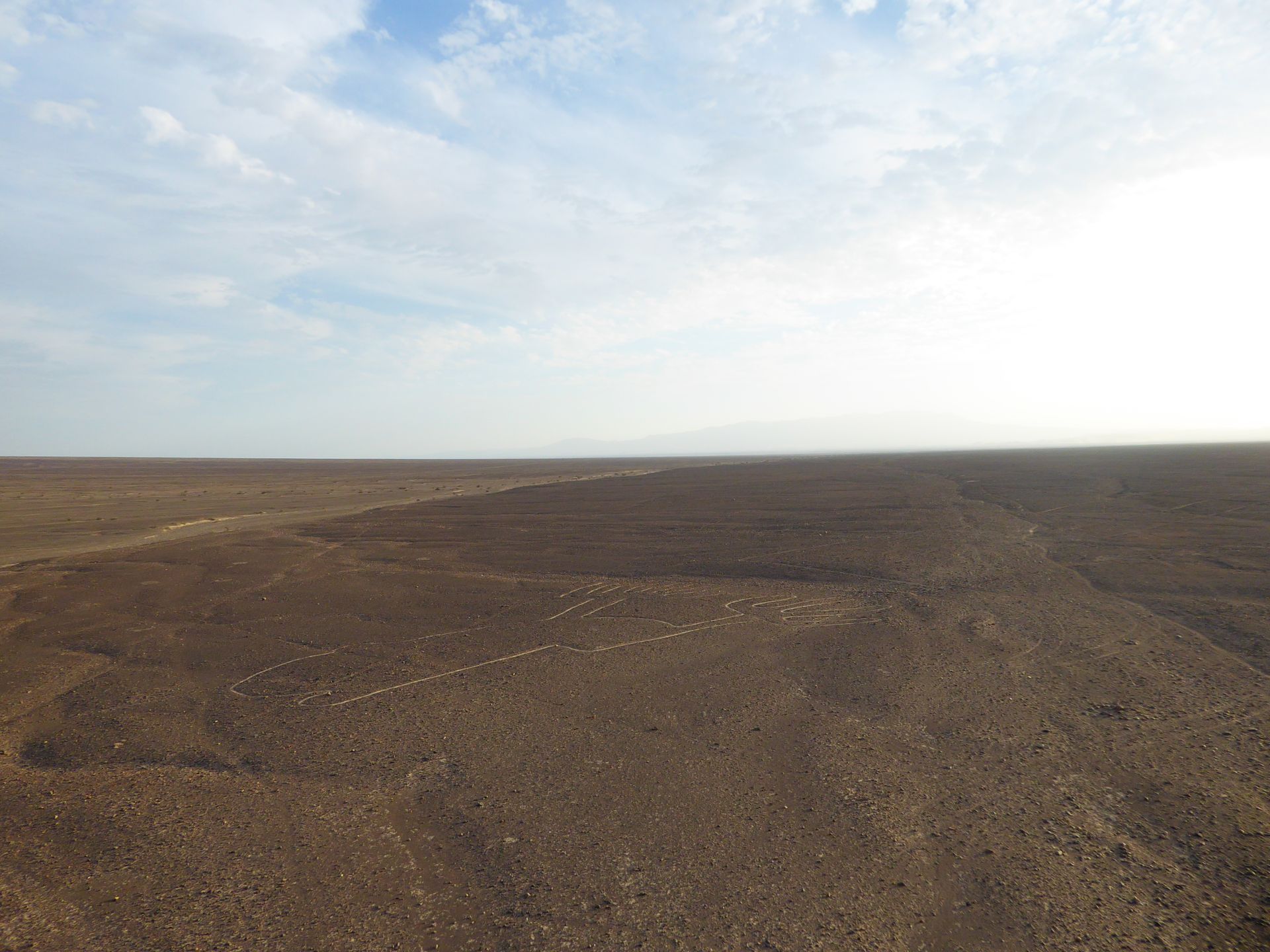
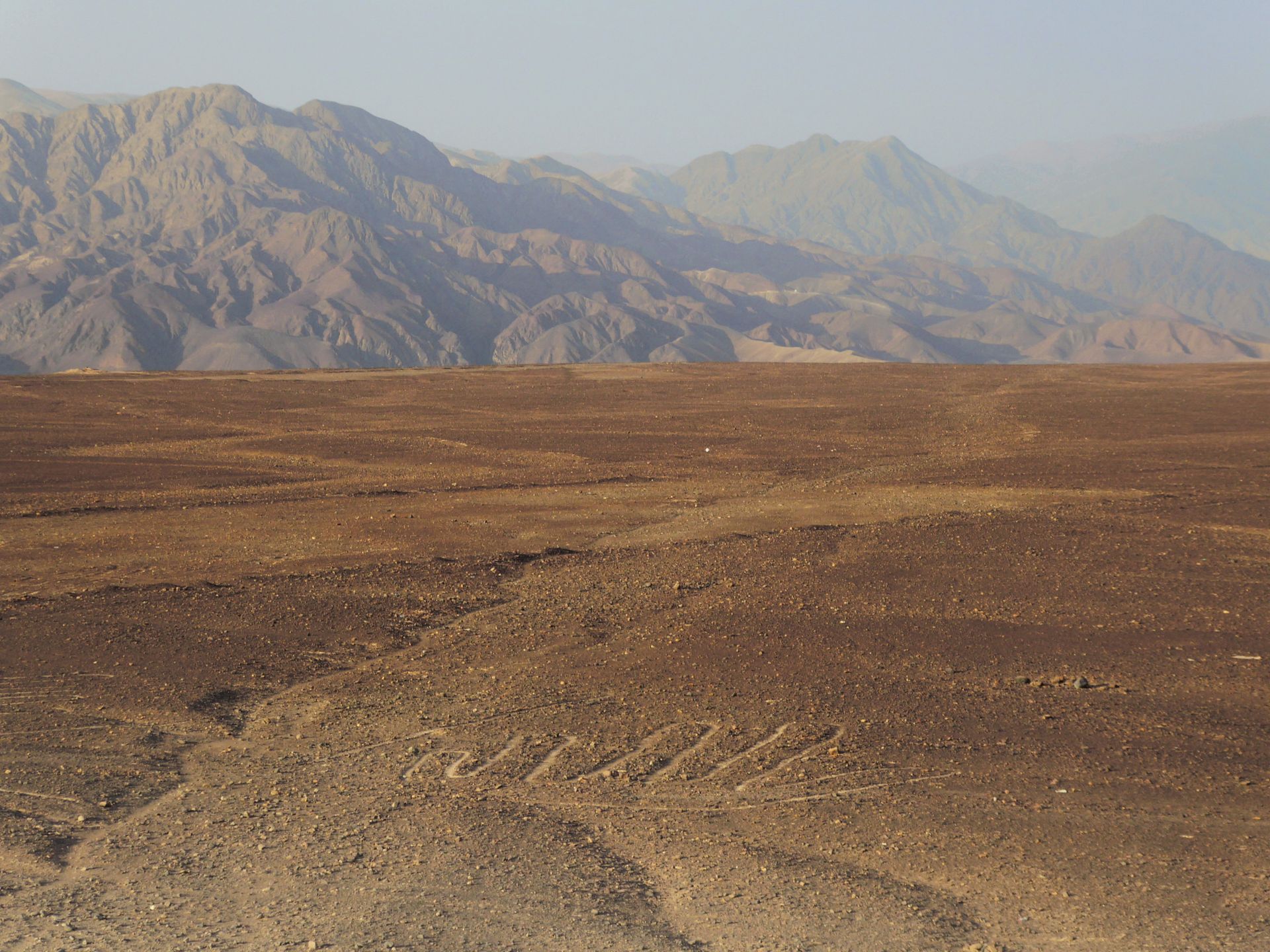
In the evening, our paths separate again for the time being. Hannes takes an earlier bus to Cusco. We have to wait until 12:30 a.m. At a street stall, we enjoy a substantial portion of fried rice with chicken, and then we drive up the winding path to the Navel of the World for almost 15 hours.
Abonner på nyhetsbrev
Svar

Reiserapporter Peru
